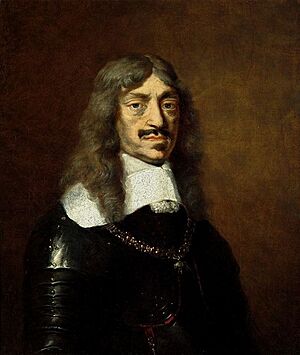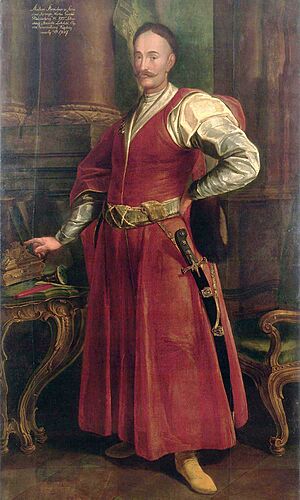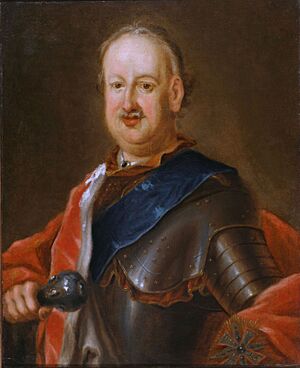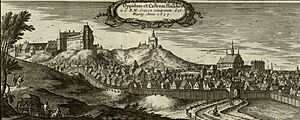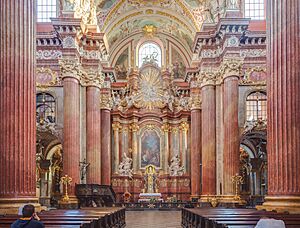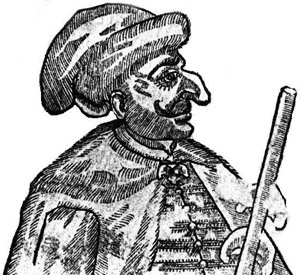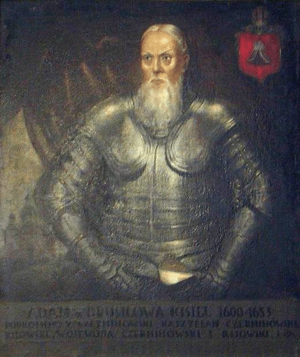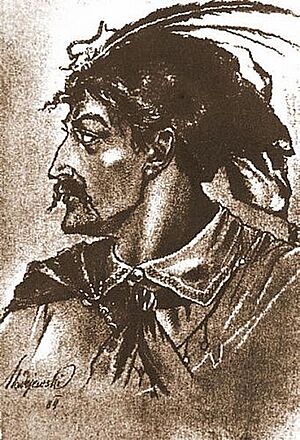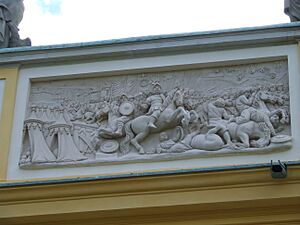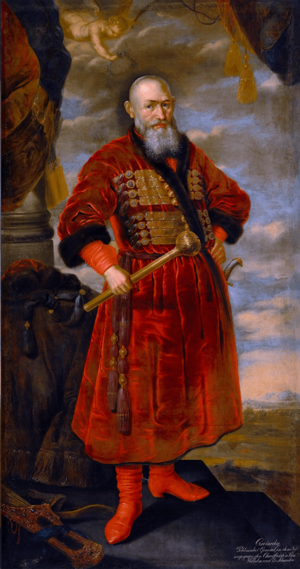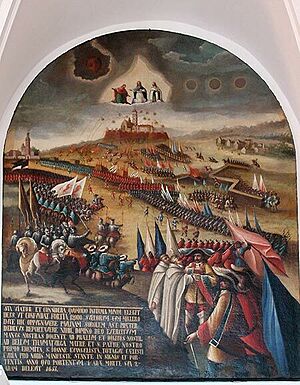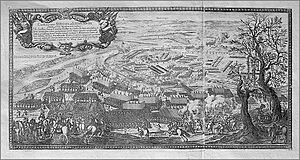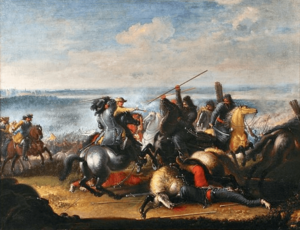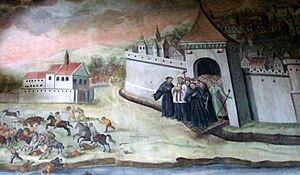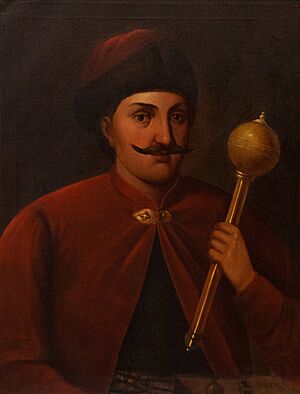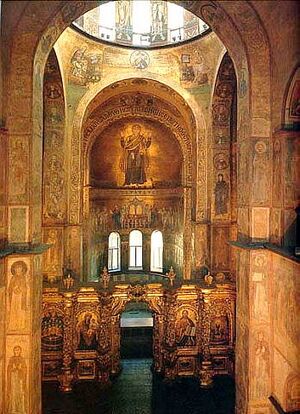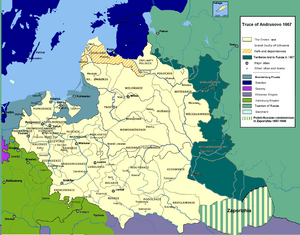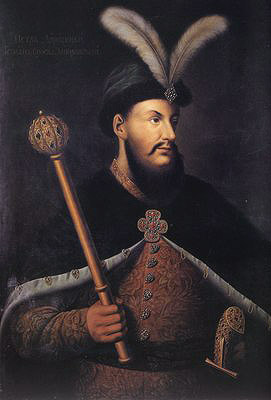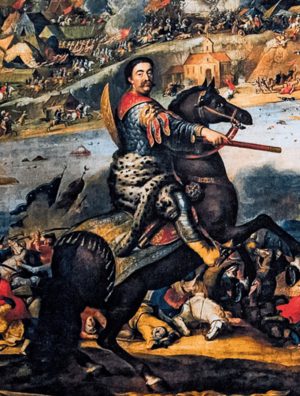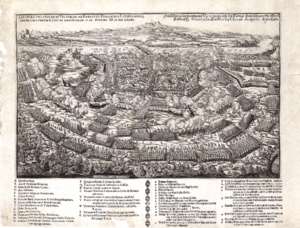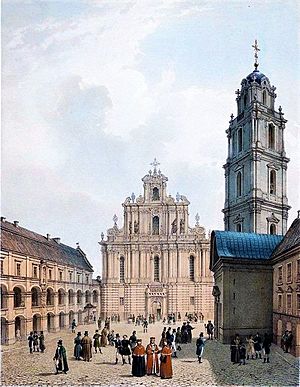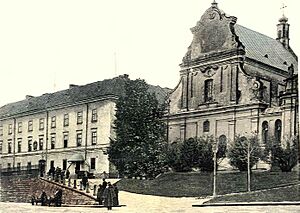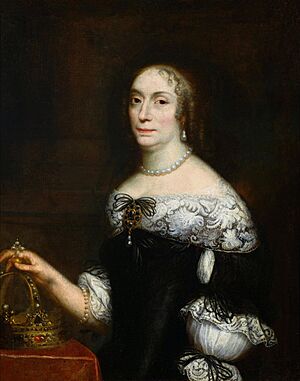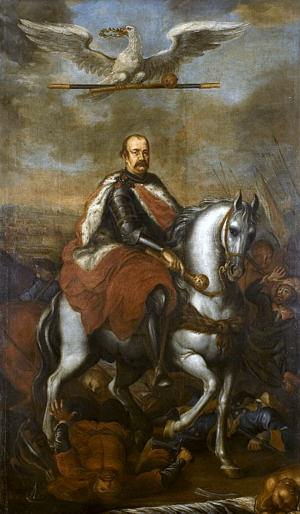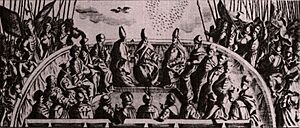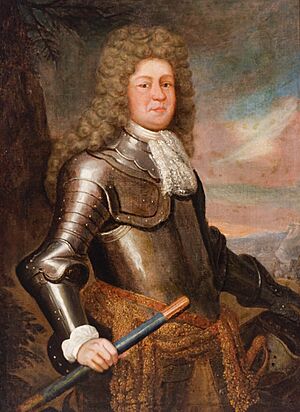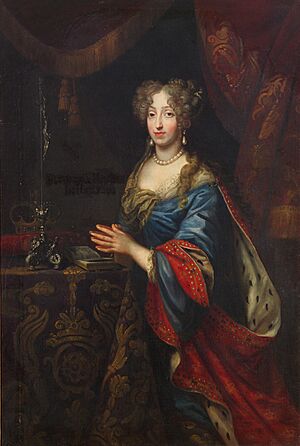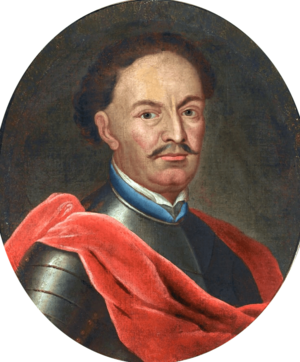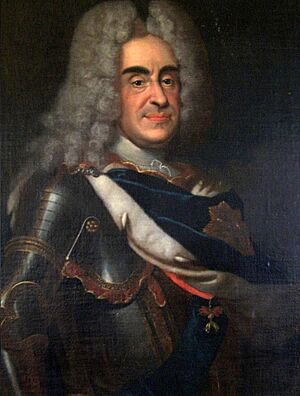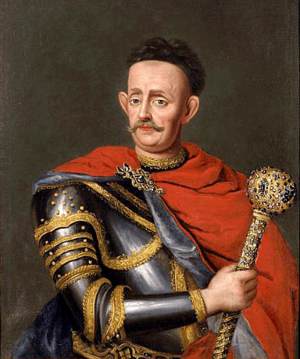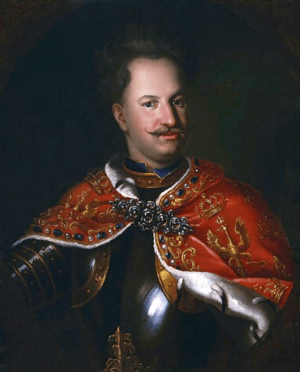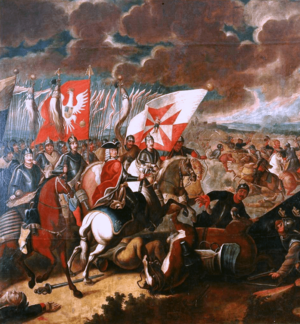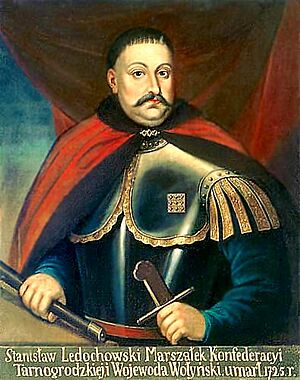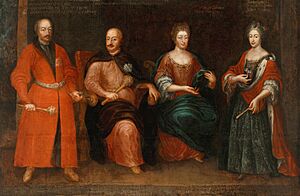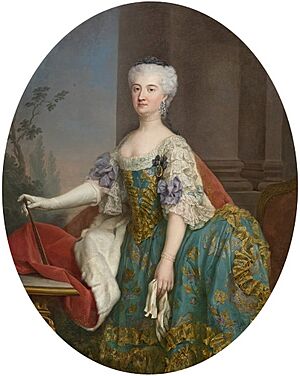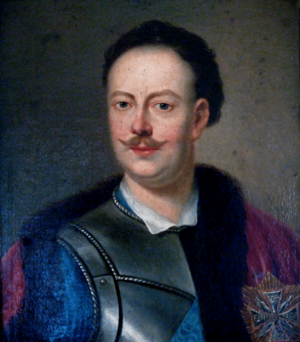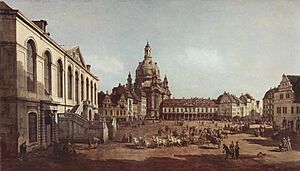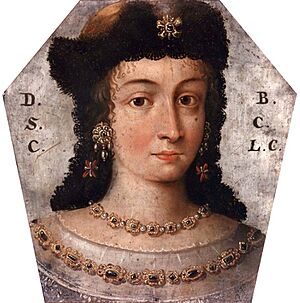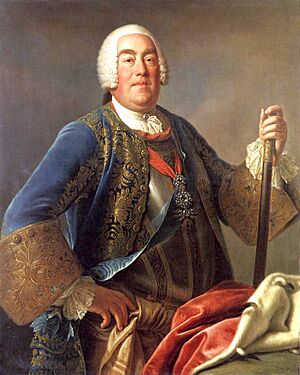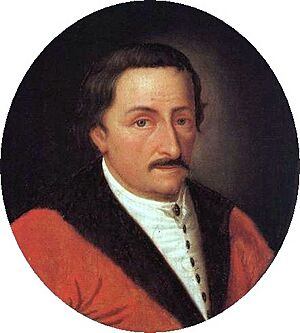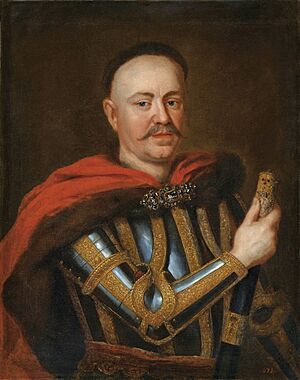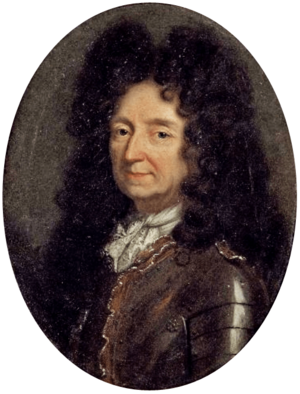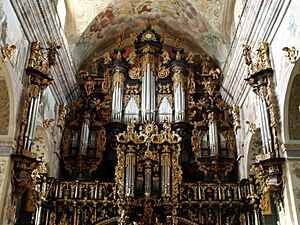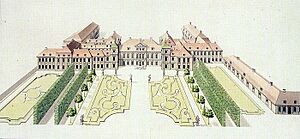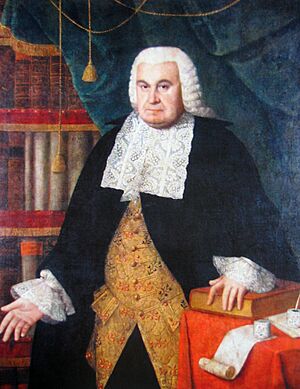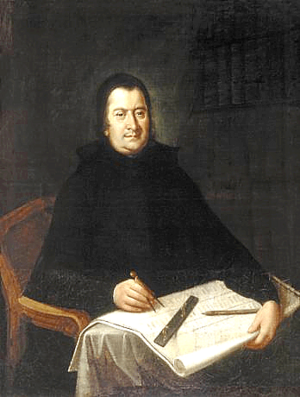History of the Polish–Lithuanian Commonwealth (1648–1764) facts for kids
Contents
The Polish-Lithuanian Commonwealth: A Time of Change (1648–1764)
The history of the Polish–Lithuanian Commonwealth from 1648 to 1764 tells the story of Poland and the Grand Duchy of Lithuania. During this time, their joint state faced many wars and invasions. This period ended just before Stanisław August Poniatowski became the last king of the Commonwealth.
From the 17th century, the Commonwealth, where nobles had a lot of power (a "nobles' democracy"), suffered from terrible wars. It also faced internal problems and eventually chaos. This led to its decline. The once strong Commonwealth became weak and open to attacks from inside and outside. In 1648, the Cossack Khmelnytsky Uprising started in the south and east. Soon after, a Swedish invasion swept through Poland. Wars with the Cossacks and Russia split Ukraine. The eastern part, lost by the Commonwealth, became part of Russia. John III Sobieski, a great king, fought long wars against the Ottoman Empire. He brought back the Commonwealth's military strength for a short time. In 1683, he helped save Vienna from a Turkish attack in the famous Battle of Vienna.
However, the Commonwealth continued to weaken. It was almost constantly at war until 1720. This caused huge losses of people and massive damage to its economy and society. The economy never fully recovered. The government became ineffective due to big internal conflicts and corrupted laws. For example, the liberum veto allowed one noble to stop any law. Foreign countries also started to control Polish politics. A few powerful families gained control over the nobility. Cities and farms fell into ruin.
The reigns of two kings from Saxony, Augustus II the Strong and Augustus III, caused more political damage. The Great Northern War greatly weakened the Polish-Lithuanian state. The Kingdom of Prussia became a strong power and took Silesia from the Habsburg monarchy. Despite these problems, the connection between the Commonwealth and Saxony led to a reform movement and the start of the Polish Enlightenment.
Economic and Social Changes
War Damage and Economic Problems
The economy in the Commonwealth fell apart in the late 17th century. This was mainly because of the many wars. Other problems also affected Europe at that time. The Commonwealth's economy, based on large estates and serfs, struggled to adapt. This led to less effective farming, lower production, and poor farmers. However, the economic decline in the Commonwealth was much worse than in nearby countries, even those with similar farming systems. The wars from 1655–60 were very destructive, but the Commonwealth was at war almost constantly from 1648 to 1720.
Unlike earlier wars that mostly affected the edges of the huge state, from the mid-17th century, central Poland was also destroyed. The two Northern Wars were especially damaging. Many foreign armies marched through the Commonwealth during the Second Northern War. Being a battlefield for so long, with troops staying and taking resources, greatly harmed the economy. It had not even recovered from damage two generations earlier. Internal fighting and looting by unpaid Commonwealth soldiers made things even worse.
War and lack of resources affected everyone. Villages, cities, and towns suffered, with many losing their urban character. Industries also struggled, and less money flowed into the state treasury. War losses and diseases (especially 1659–63) cut the population by a third, to 6–7 million people. As peasants, townspeople, and ordinary nobles lost their money, the magnate class became the only group with significant economic and political power. This gave them total control over what was left of the Commonwealth's politics.
War and economic pressures made existing social divisions worse. Xenophobia (fear of foreigners) and intolerance became common. Different groups focused on their own separate traditions. The efforts to build a united nation during the Renaissance were undone.
Changes Among the Nobility

In the 16th century, nobles owned farms called folwarks. By the mid-17th century, these were replaced by huge estates called latifundia, owned by magnates. These large estates were found throughout the Commonwealth, especially in the eastern parts of Poland. War damage affected these diverse magnate lands less than the smaller estates of middle nobles. This made many nobles dependent on the powerful magnates. Parts of a latifundium were often rented out or managed by hired nobles or city dwellers, often Jewish. Each level exploited the serf laborers.
Before, nobles had legal control over business, farming, trade, and manufacturing. Now, in a more chaotic state, magnates had absolute rule over their large domains. This rule was based on their power, not on laws. The magnates used private armies to enforce their power in their regions.
The growing power of the magnates hurt the unity of the middle nobility. This made the large state even more divided. Magnates built networks of supporters among the nobles. Loyalty to the nation was replaced by loyalty to a region. This was because weak state institutions offered nobles neither good careers nor enough protection.
Magnates controlled the lesser or petty nobility. This group had little or no property and poor education. They were useful for influencing public events like local assemblies (sejmiks) or elections. The lowest-ranked nobles, called czynszownicy (renters), were free but landless and poor. Their lives were much like peasants, as they depended completely on a rich patron. The brukowcy (pavement people) had no property and did various jobs. Nobles who worked as servants in magnate households were called domestic szlachta. The szlachta zaściankowa or zagrodowa (homestead people) were numerous propertied petty nobles. Among the lower ranks, they alone had some symbolic noble status.
More important was the role of the middle nobility. These were propertied and skilled people. They could work in magnate courts or get public jobs with the help of their magnate friends. These nobles also gained money, like profitable land leases, and legal protection from frequent lawsuits.
Magnates themselves formed groups or factions with common interests. In the 17th century, these groups were usually regional, like the Pac or Sapieha families in Lithuania. In the 18th century, the Czartoryskis and the Potockis formed powerful factions across the entire Commonwealth.
Nobles did resist being controlled by magnates, but their movements were not well organized. By the first half of the 18th century, the middle nobility was no longer an independent force in national politics.
All nobles had the same legal status, which gave many a false sense of equality. Most nobles of Lithuanian, Ruthenian, or German origin became Polonized and Catholic. Some Protestant nobles remained active in Royal Prussia and Greater Poland. After the Counter-Reformation, the Jesuits and other Catholic educators stopped offering high-quality education. The common nobles became narrow-minded and backward. As the nation declined, they believed in the sarmatism idea that they were a chosen nation and looked down on everything foreign. They did not tolerate different ideas. Corruption was high, and public morale was low.
Some magnates were more worldly. They were influenced by foreign ideas from royal courts and Western Europe. They admired foreign (often French and German) ways and fashions. Magnates built grand palaces in cities and on their country estates. The wooden manors and feasting lifestyle of the nobles tried to copy the rich and powerful.
Farming Problems and Peasants
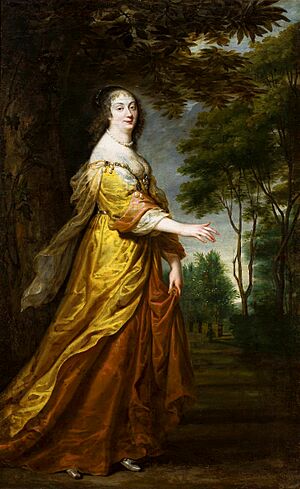
A deep farming crisis lasted from the 1650s to the 1720s. Under constant war and bad economic conditions, peasants were forced to work too much. Their communities lost people, and many villages disappeared. Serfs were moved, and their plots were taken over to make larger estates. Sometimes, forced labor was replaced by rent if it was more profitable for landlords. These harsh measures did not increase production. Instead, they made the crisis worse by ruining peasant farms. Not all regions suffered equally. Farming in northern Poland (Gdańsk Pomerania and Greater Poland) remained somewhat profitable. Southern Poland (Lesser Poland) saw the biggest decline in rural areas and the largest drop in family-owned farms.
After the Khmelnytsky Uprising and the Swedish Deluge, about 35% of villages in Royal Prussia and 60% in Podolia were completely destroyed.
Each village often acted as a self-contained unit, ruled by the lord's manager. Local self-government existed but depended on cooperation. Parish schools mostly taught religious lessons and social rules. The only allowed peasant activity, sometimes required, was going to the village tavern to buy beer from the lord's brewery. Taverns offered some fun, were places for folk art, and allowed occasional contact with the outside world.

Living conditions in poor rural villages were very bad. Exploited peasants resisted in various ways, most often by running away from abusive landlords. Some villages refused to perform their duties. Rarely in Polish lands, there were armed rebellions. The Kostka-Napierski Uprising happened in 1651. There were rebellions in the Podhale region in 1670 and in other regions from 1735–38. In Silesia, Polish peasants rebelled from 1722–29 and in 1750 near Pszczyna, requiring the Prussian army to intervene. Highway robbery was another form of peasant resistance. Some leaders became famous in folk tales.
Large-scale peasant armed resistance was very important in the eastern Ruthenian lands. Here, it combined with Cossack unrest.
Decline of Towns and City Dwellers
The collapse of cities and towns was the clearest sign of the Commonwealth's economic breakdown. Early signs of capitalism from the Renaissance were destroyed. This greatly slowed down economic development compared to Poland's neighbors, or even to Silesia and parts of Pomerania, areas lost by Poland.
Peasants, who used to be important customers for town merchants, were now poor. Their lords forced them to buy only from their own estates. This greatly reduced their role in the internal market. The market was further hurt by money problems, war destruction, and the loss of major Polish and Lithuanian cities to neighboring states.
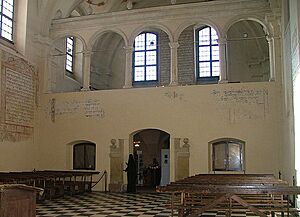
Slow rebuilding after 1720 happened unevenly. Some large cities like Warsaw and Gdańsk did best. Others like Kraków shrank to 10,000 people and remained depressed. Most smaller towns suffered badly, except for those in western Greater Poland, where Wschowa grew remarkably.
These changes altered the ethnic makeup of city dwellers. Fewer peasants moved to towns, while the number of Jewish inhabitants grew a lot. Of the 750,000 Jews in the Commonwealth by the mid-18th century (some sources say a million in the 1770s), three-quarters lived in cities. They made up almost half of the total urban population. Jews were very hardworking, accepted small profits, and soon controlled crafts and trade, especially in smaller towns. Their communities (autonomous congregations called Qahal) offered many loans to Polish nobles and upper classes. Christian townspeople sometimes tried to limit Jewish business rights, but often failed.
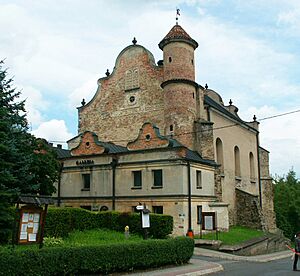
Some Polish cities had a "privilege" called de non tolerandis Judaeis, which meant they could exclude Jews from their area. However, many Jews still managed to stay within city limits. Others lived in jurydykas, areas outside city walls controlled by feudal lords. Jews also lived in shtetls, their own small country towns, protected by a feudal lord. Jews usually followed their own court system. If there was a conflict with city authorities or other Christians, or in appeal cases, they went to noble courts. Jews and Christians were not completely separated. There were no formal ghettos in the Commonwealth. Jewish city residents helped maintain public services and contributed to military defense.
The weak central government could not create a unified economic policy. Even small attempts to use mercantilism and state protectionism (common in Europe then) failed. The country's trade balance was usually negative, and its role in transit trade decreased. Lack of central control made the Commonwealth open to exploitation by more advanced economies. Money problems and chaotic policies, plus Frederick II flooding Poland with fake Polish money, led to massive devaluations and economic losses. As townspeople increasingly worked in farming, city crafts and manufacturing, the backbone of the urban middle class, greatly declined. However, the Commonwealth managed to keep or rebuild much of its mining, metallurgy, and heavy industries, some important for military use.
Across the country, city dwellers lost influence. By the end of the 18th century, they made up no more than 15% of the total population. Most cities were private, owned by feudal lords, not "royal" or public. Their residents were subject to the arbitrary rules of these owners. In the 18th-century royal city of Kraków, 55% of the land within the city walls belonged to the Catholic Church, 17% to nobles, and only the rest to the actual city residents. Enlightened noble writers recognized the decline of towns as a major reason for the nation's decline.
City populations in the Commonwealth were divided by trade, class, ethnicity, religion, or type of rule. They were consumed by internal conflicts. The most successful city dwellers could join the nobility, leaving urban jobs or causing more tension in cities. Townspeople in larger cities, including Gdańsk, strongly supported the nation during foreign invasions. The Commonwealth's urban upper class lost its leading role in cultural progress. But in Silesia, where Polish nobles no longer existed, Protestant townspeople continued Polish language education and cultural activities. By the mid-18th century, Polish and German city dwellers in Gdańsk, Toruń, and other Royal Prussian towns were pioneers of the Polish Enlightenment. The narrow-mindedness and prejudice in many small towns led to a number of witch trials. Many magnate homes were built and public projects completed in Warsaw during the first half of the 18th century.
Signs of Economic Recovery
The first signs of economic recovery appeared between 1725 and 1750. More noticeable progress in farming and industry happened in the next two decades (1750–70). This was partly due to an improved farming market in Europe. During the earlier period, some technical advances were made in farming. More importantly, the way rural society worked began to change. Starting in the Poznań region and then elsewhere in western Greater Poland and Royal Prussia, the forced labor of serfs was replaced by peasants renting land and paying money to landowners. Peasants often preferred this "buying off" of labor, as it improved their finances and reconnected them to city markets.
These two regions and the capital city of Warsaw also saw a moderate rise in industrial activities and urban businesses. A major trading company was set up in Warsaw by French Huguenots in 1723. Many magnates created manufacturing businesses in various regions. Among the most important was the growing iron industry in southern and central Poland (Old-Polish Industrial Region). These small signs of industrial progress in the Commonwealth happened almost half a century later than in Poland's western and southern neighbors, and even later than in Russia.
Wars and Government Decline
Khmelnytsky Uprising and Russian Alliance

The long Khmelnytsky Uprising began in 1648, led by Bohdan Khmelnytsky. It was a huge national and social movement. Many exploited peasants from Ruthenia joined the Cossacks to fight their noble oppressors. The reasons for the unrest included Polonization, making people Catholic, state support for the Uniate Church (especially in western Ukraine) at the expense of the often persecuted Orthodox religion, and denying Ukrainians cultural opportunities. Despite being suppressed, during the first half of the 17th century, Ukrainians in the region grew stronger and more united at all levels of society. A large majority of Ukrainian nobles from the Kiev and Bratslav regions, and Ukrainian city dwellers, also joined the uprising.
The very dry summer of 1648 and locust attacks caused crop destruction and hunger in Ukraine, making the region even more unstable.
Władysław IV Vasa was preparing for a war against the Turks. By the time the Sejm stopped the plan, many Cossack warriors were ready for battle. A key factor was the rise of an outstanding leader, Bohdan Khmelnytsky, a scribe in the Zaporizhian Army. He had suffered injustice from a Polish nobleman, Daniel Czapliński, and could not get help through official channels. Khmelnytsky went to the Zaporizhian Sich, where he stirred up the Cossacks. They were already angry about repressions in the 1630s and restless because the planned war was canceled. Khmelnytsky effectively made the Cossack force switch sides. He got support from the Crimean Khanate. The Tatars (and their Ottoman rulers) wanted to weaken the Commonwealth's military. The Cossack-Tatar alliance, a new factor in the region, was very effective militarily.
The bad and short-sighted policies towards the Cossacks by the first two Vasa kings had terrible results. In April and May 1648, at the Battle of Zhovti Vody and the Battle of Korsuń, the combined Cossack-Tatar forces completely destroyed the Polish army. They captured Polish commanders Mikołaj Potocki and Marcin Kalinowski. Thousands of Registered Cossacks, sent to fight with Polish forces, were convinced by the rebels to change sides. As a result, large areas of Dnieper Ukraine were engulfed in social unrest, and the region began to separate from Poland.
Ukrainian land owner Jeremi Wiśniowiecki tried to defend his huge estates and people. He began retreating at the end of May from left-bank Ukraine. He fought the Cossacks with some success and was as ruthless as the rebels. But he did not resolve the conflict and prevented any negotiated solution. Wiśniowiecki commanded his army at the Battle of Starokostiantyniv in late July against Cossack forces led by Maksym Kryvonis. The battle was undecided, allowing Wiśniowiecki and his units to continue moving west.
The death of Władysław IV on May 20 and the chaotic period before a new king was chosen made things worse. Chancellor Jerzy Ossoliński and Voivode Adam Kisiel, a magnate popular with Ukrainians, wanted to make concessions to calm the Cossacks. Other magnates, especially Wiśniowiecki, Aleksander Koniecpolski, and Janusz Radziwiłł, demanded harsh punishment for the rebels. The assembly to choose a new king was also undecided. The newly appointed military leaders were incompetent. This led to a terrible defeat at the Battle of Pyliavtsi in September. This allowed Khmelnytsky to move towards Lwów and Zamość, while the uprising spread into Volhynia and Belarus.
This situation allowed Khmelnytsky, who called himself the Cossack Hetman, to influence the royal election. John II Casimir Vasa was chosen with his support. John Casimir and the peace-seeking nobles offered talks with Khmelnytsky, who had retreated into Ukraine. In February 1649, in Pereiaslav, the confident Hetman, now speaking of total liberation for the "Rus' nation", negotiated with Adam Kisiel. But only a temporary halt to fighting was agreed. Both sides prepared for war, and military actions resumed in spring.
Polish units protecting Volhynia under Wiśniowiecki successfully defended their fortified camp at Zbarazh in July and August against huge Cossack and Tatar armies. Their situation became desperate when the main Polish forces under King John Casimir tried to rescue them. The King was surprised by the enemy at the Battle of Zboriv. But Ossoliński saved the Polish army by successfully negotiating with İslâm III Giray, the Tatar Khan. The Khan was worried about the Cossacks' growing power. Since Lithuanian forces under Janusz Radziwiłł also entered the Dnieper region, Khmelnytsky agreed to stop fighting. The terms were favorable for him, the Cossacks, and the Eastern Orthodox Church, negotiated in the Treaty of Zboriv. The Cossack Hetmanate was officially recognized by the Commonwealth.
A period of peace lasted from August 1649 to February 1651. But the Polish side did not fully implement the Zboriv agreements, making further conflicts unavoidable. Khmelnytsky engaged in diplomacy. He got a promise of Ottoman Empire protection and rule over Moldavia for himself if he swore loyalty to the Sultan in 1650. The Cossack Hetman's envoys also contacted Polish dissidents and unhappy peasants in several regions of Poland and Silesia.
The Kostka-Napierski Uprising broke out in June 1651 in the Podhale region. The peasant rebels, influenced by Khmelnytsky, took over the Czorsztyn castle. From there, their leader Napierski called on peasants to throw off their lords' control. The uprising gained limited support and was soon put down, its leaders executed. There were also other peasant revolts, including one organized by Piotr Grzybowski in Greater Poland.
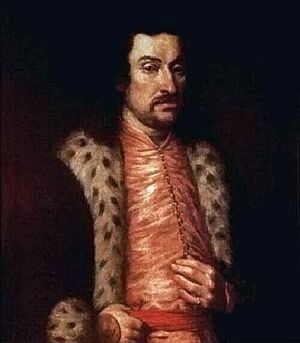
In February 1651, Hetman Kalinowski attacked the Cossacks but suffered heavy losses and retreated to Kamieniec Podolski. In May, he fought his way to Sokal, where he joined the main Polish army. In June, both the regular army and the nobles' militia (pospolite ruszenie) moved decisively against the Tatar-Cossack forces. At the Battle of Berestechko, King John Casimir chose the battle site and destroyed the Cossack army in heavy fighting. The fleeing Tatars took Khmelnytsky with them. However, most Cossack soldiers were saved by one of their excellent commanders, Ivan Bohun.
Berestechko, "one of the greatest achievements of the Polish military," removed the threat to the Commonwealth since 1648. But it did not resolve the Ukrainian conflict. The noble fighters soon left. Khmelnytsky regrouped and, with Tatar reinforcements, resumed his attacks. As the combined Polish and Lithuanian armies could not follow up the Berestechko victory in the undecided Battle of Bila Tserkva, the two sides signed the Treaty of Bila Tserkva. This treaty reduced the Cossack gains from the Treaty of Zboriv.
With the Sultan's support, Hetman Khmelnytsky then tried to control Moldavia. He demanded his son Tymofiy marry Ruxandra, daughter of Vasile Lupu, the Moldavian ruler connected to the Radziwiłł family. After Vasile refused, the Hetman sent a strong Cossack-Tatar army to Moldavia. This force was met in May 1652 by Hetman Kalinowski and his over ten thousand Polish soldiers. At the disastrous Battle of Batoh for the Poles, most of them, including Kalinowski, were killed.
The marriage did happen, but Moldavian nobles conspired against the ruler. Tymofiy, defending his father-in-law, died at the Polish-Transylvanian siege of Suceava. The main Polish forces led by John Casimir got stuck near Zhvanets. John Casimir negotiated with the Tatar Khan İslâm Giray again. In December 1653, he accepted the old Treaty of Zboriv's conditions in the Treaty of Zhvanets.
The Tatars, concerned about keeping the regional balance of power, may have saved the Commonwealth. They decided not to support the Cossacks at key moments. While they benefited from their position (the King agreed not to resist future Tatar slave raids into Poland), for the Poles, the Berestechko victory was wasted.
The Commonwealth and Cossack fighters could not find a military solution. The Crimean and Ottoman alliances were not reliable for Bohdan Khmelnytsky. Ukraine was devastated by five years of war. Enslavement of Ukrainians by Tatar "allies," plagues, and periods of hunger added to the destruction. Depopulation reached 40% in some regions. These losses hurt the Cossack army's unity and led to a stronger pro-Moscow stance. The Cossack hetman turned to his earlier idea of cooperating more with Russia. Talks with Russia happened in 1651, but the deal was not completed then due to the Berestechko defeat. Russia was a country with a more distant common history, but close language, religious, and cultural ties with Ukraine. Cossack leaders hoped for Russia's help in removing what was left of Polish noble rule in Ukraine. They also expected broad autonomy for the Cossack state. Polish defeats in the region convinced Tsar Alexis to abandon his non-involvement policy and move against the Commonwealth.
A Russian mission arrived in Pereiaslav in January 1654. The Cossack council there accepted the Tsar's rule, though with serious doubts and failed attempts to negotiate concessions. The Cossacks were offered an elected hetman, a sixty-thousand-man army, and possession of landed estates. Khmelnytsky and his entire Zaporizhian army pledged loyalty to the Russian ruler, and Ukraine came under the protection of the Tsardom of Russia. Ukrainians of all ranks gathered, or were forced to gather, in Kiev and other towns to swear loyalty. Some secular and Orthodox clergy leaders objected or refused. The actual agreement was finalized in April in Moscow. There, Cossack envoys convinced Russia to accept most Cossack demands (the degree of Ukrainian autonomy was specified) and got a promise of Russian intervention in the Commonwealth.
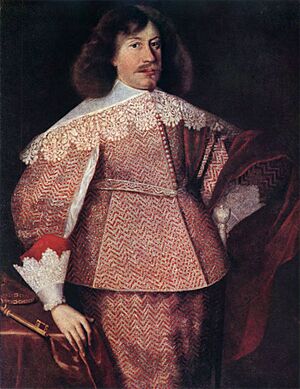
The Cossack hetman and his advisors intended a military alliance to fight Poland together, even if it meant losing some recent sovereignty. For Russia, it opened a new path for imperial expansion. The Treaty of Pereyaslav, an act of "unification of Ukraine with Russia," was seen by the Commonwealth as a rebellion combined with foreign interference. It led to a new Russo-Polish war that lasted from 1654 to 1667. Powerful Russian armies entered the Commonwealth, and the conflict with the Cossacks became a war with Russia.
Russian plans included taking over Ukraine and recovering lands lost further north. The Ottoman Empire and the Crimean Khanate, worried by this new situation, now supported the Commonwealth. With the Tatars, Polish units launched a destructive raid into Ukraine. In early 1655, they fought and won the Battle of Okhmativ against combined Russian and Ukrainian forces. Later that year, Khmelnytsky counterattacked, took Lublin, and reached the Vistula. But he was forced to acknowledge John Casimir's rule again when the Tatars stopped his efforts. Until his death in 1657, the Cossack leader, despite the Pereyaslav treaty, pursued independent policies. He aimed to benefit from the troubles that had hit the Commonwealth, but also considered improving relations with the "great power" he had shaken.
In the Grand Duchy of Lithuania, the first part of the war with Russia ended with a total defeat for the Commonwealth. At the Battle of Shklow (1654) and the Battle of Shepelevichy, the Russians destroyed the small Lithuanian force under Janusz Radziwiłł. The country was open to the invaders. Belarusian towns surrendered one after another, and in 1654, Smolensk fell after a three-month siege. The next year, the Russians took Minsk, Grodno, and Vilnius. With the simultaneous disasters of the Swedish war, the Commonwealth had to agree to the Truce of Vilnius in 1656.
The Commonwealth's failure to free the Cossacks led to a shift in regional power. The Khmelnytsky Uprising marked this turning point. It led to the western expansion of the Russian Empire, which eventually resulted in the loss of the Commonwealth's independence.
Protecting Borders and Foreign Policy
The Khmelnytsky Uprising started a long period of internal crisis in the Polish–Lithuanian Commonwealth. The situation outside also got worse. Sweden, Russia, Prussia, and the Ottoman Empire became stronger. The Commonwealth had to fight on both the Baltic and Ukrainian fronts at the same time. It lost significant territory, though its existence was not immediately threatened. Major European states, including France under Louis XIV, saw the Commonwealth as a regional power and a valuable partner. It was a necessary part of the European balance of power. Military victories, especially under Hetman and later King John III Sobieski, reinforced this view.
In the decentralized state and treasury, military power was limited by inefficient taxes. The Commonwealth in the late 17th century owed huge amounts of money to its own army. Military groups (confederations) or rebellions, where the army "collected" its pay from royal and church lands, became common. Hetman Sobieski could not follow up his Khotyn victory partly because unpaid Lithuanian and Polish troops left. The Commonwealth could field at most a 60,000-man army (plus the unreliable nobles' militia). At the same time, the Habsburg monarchy or Tsardom of Russia could field armies twice that size. After the Cossack-Tatar wars and especially after 1655, the armed forces had to be almost completely rebuilt.
The Commonwealth's forces had a much higher proportion of cavalry (50%) than other European armies, which were mostly infantry. This cavalry was unmatched in Europe. The infantry was also very effective in battle. Artillery was well-developed and strong, with nearly two thousand pieces across the country. Most soldiers were now native, not foreign. Fewer nobles participated, but they controlled the command and officer ranks. The highest ranks belonged to wealthy magnates, except for Stefan Czarniecki, a nobleman from more humble beginnings. Czarniecki introduced guerrilla warfare with many peasants participating. After him, the last great Polish battlefield successes were due to the military genius of Jan Sobieski.
One major weakness of the Commonwealth's defenses was the lack of modern fortifications across most of its territory. This allowed invading armies to cause disproportionate damage. Exceptions were the Vistula river mouth and the southeast, where there were strong, though neglected, fortresses like the Kamieniec Podolski Castle.
Financial problems also affected the Commonwealth's diplomacy and foreign policy. John III kept diplomats in several major capitals, but the Sejm limited what they could do. The Sejm also banned long-term foreign representatives in Warsaw, a rule ignored by the papacy and many governments. The Sejm itself often sent its own missions abroad. Magnates, including top state officials like hetmans, conducted their own foreign activities. Sometimes they even served foreign powers for personal gain. When French dominated European diplomacy, in Poland the official language was still Latin. The 1684 Holy League treaty, which ignored Polish military contributions and interests, was just one example of the Commonwealth's ineffective diplomacy.
Swedish Invasion and Prussia's Rise
The Swedish invasion of the Polish–Lithuanian Commonwealth, known as the Deluge, happened during the Second Northern War. In 1655, the Commonwealth's survival was in danger. The huge state was already weakened by Russian attacks, who occupied most of Grand Duchy of Lithuania, and by Khmelnytsky's Cossacks in Ukraine. Then, Sweden launched a massive attack. Swedish leaders, encouraged by their gains from the Peace of Westphalia, including western Duchy of Pomerania, wanted to take advantage of Poland's difficulties. They hoped to easily take over at least Courland and Prussia, to fully control the Baltic Sea area.
Worried about Russia's strength and advances in the East Baltic and towards Livonia, the Swedes blocked their progress by taking over Dünaburg. King Charles X Gustav of Sweden was also encouraged by Polish magnates who were unhappy with John Casimir's rule. Hieronim Radziejowski, expelled from the Commonwealth, was their representative in Stockholm. The Polish nobility hoped that getting the Swedish king's protection, or even accepting his rule, would help them get back the eastern lands lost in recent wars.
Swedish armies entered the Commonwealth from their Pomeranian and Livonian territories. The Pomeranian force crossed the border under Arvid Wittenberg on July 25. At the Battle of Ujście, Greater Poland's nobles' militia fought briefly but soon surrendered and sought Charles Gustav's protection for their province. Magnus De la Gardie's army entered Lithuania, promising help against the Russians. Janusz and Bogusław Radziwiłł there accepted the Swedish king's rule. On October 20, they signed the Union of Kėdainiai treaty, under which Lithuania would unite with Sweden instead of Poland.
Other Polish provinces had also surrendered to the King of Sweden. Warsaw did not resist and was thoroughly looted. John Casimir fought but was defeated at the Battle of Żarnów. He sought refuge, first in Żywiec district and then in Oberglogau in Silesia, outside Poland. Kraków was defended bravely for three weeks under Stefan Czarniecki's command. But it had to surrender when a rescue force was crushed by the Swedes in the Battle of Wojnicz. Most of the Polish nobility and armed forces declared loyalty to Charles Gustav.
The Swedes failed to use local support. They treated the Commonwealth as a conquered country, causing widespread violence, taking resources, and looting. Spontaneous popular resistance first arose among the peasants, starting with a fight near Myślenice. Partisan groups also included townspeople and nobles. These nobles, disappointed with Charles Gustav, often switched sides and led the fighting. Krzysztof Żegocki led the uprising in Greater Poland. Units from the Carpathian foothills were very successful, freeing Nowy Sącz and many other towns. Lwów and Zamość resisted both Cossack and Swedish attacks. Similarly, Gdańsk and Marienburg resisted the Swedes. Some Lithuanian forces, under Paweł Jan Sapieha, remained loyal to John Casimir. They fought in Podlaskie against the Radziwiłłs and took Tykocin. John Casimir, still in Silesia, called for national resistance against the Swedes. On December 18, he began his return trip to Poland. The Commonwealth's remaining ally, Crimean Khan Mehmed IV Giray, who had just defeated Khmelnytsky, offered help.
The Jasna Góra Monastery in Częstochowa was under siege for several weeks at the end of 1655. The monastery's successful defense was very important for Polish morale and spirit. The defense was led by Prior Augustyn Kordecki with a few hundred volunteers. Before the end of the year, as peasant rescue units approached, the Swedish forces had to abandon the siege. At this stage of the war, the Poles became more effective militarily. They used the attack on the national shrine as a rallying point. It added a religious dimension (defense of Catholicism and anti-Protestant) to their fight.
On December 29, the Polish commanders withdrew their support for Charles Gustav. They formed the Tyszowce Confederation, a military alliance aimed at opposing the Swedish invaders. In January 1656, John Casimir returned from abroad. Impressed by the contributions of Poland's common people, he solemnly declared in Lwów his support for freeing peasants from unfair obligations.
Charles Gustav focused on taking over Prussia. Toruń surrendered without a fight, Marienburg after resisting a siege. Gdańsk, supported by the Netherlands, remained unconquered. The Swedish king got concessions from Frederick William I, the Elector of Brandenburg and Duke of Prussia. In exchange for the Warmia region, Frederick William agreed in Königsberg to become a vassal of Sweden. Charles Gustav then moved south, intending to break Polish military resistance.
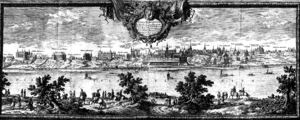
The Poles were still at a disadvantage against the Swedish army in open battle. Czarniecki's forces were defeated at the Battle of Gołąb in February 1656. Afterwards, the Polish commander successfully used guerrilla tactics, harassing the enemy while avoiding major battles. Charles Gustav was soon forced to abandon the siege of Zamość and the planned attack on Lwów. His attempt to hold off the enemy along the San River failed. His forces were trapped by Czarniecki, Jerzy Lubomirski, and Sapieha at the fork of the San and Vistula rivers. When Czarniecki left to face and crush at Warka the approaching Swedish rescue force, Charles Gustav escaped. But the massive Polish uprising then took the initiative and broke Swedish defenses. Most of Lesser Poland was freed, except for Kraków. Greater Poland was also cleared of Swedes after Czarniecki's and Lubomirski's raid there. At the end of June, Warsaw, defended by Wittenberg, was stormed and retaken by popular forces.
Seeking help, the Swedish king offered Frederick William Greater Poland. The combined armies of the two monarchs approached Warsaw. At the end of July, they fought a three-day heavy battle against Polish and Lithuanian troops aided by the Tatars. The Swedish-Brandenburg coalition won. However, Frederick William soon had to retreat after his duchy was attacked by Polish and Tatar forces. Hetman Gosiewski managed to defeat the combined enemy at the Battle of Prostki. Czarniecki continued clearing operations in Greater Poland, followed by a revenge raid into Brandenburg and Farther Pomerania.
The international balance of power also shifted in favor of the Commonwealth. This was due to the agreement with Russia in fall 1656. Russia wanted to prevent the collapse of the Polish-Lithuanian state and uncontrolled Swedish expansion. Without giving up its own claims in the east, Russia moved against Swedish forces in Livonia, which also helped remove them from Lithuania. This new situation forced Charles Gustav to change his plans of conquering all of Poland. He proposed a plan to divide Poland, hoping to keep at least some of Sweden's gains.
First, in the Treaty of Labiau, the Swedish king granted sovereign rights in Prussia and possession of Greater Poland to Frederick William. In December 1656, a partition treaty involving several monarchs was signed in Radnot in Transylvania.
One of the treaty signers was George II Rákóczi, Prince of Transylvania. His forces entered the Commonwealth in early 1657, looting. In cooperation with the Swedes, they reached as far north as Warsaw and Brest. Rákóczi's initial success had positive consequences for Poland. It led to a new international situation that prevented the Treaty of Radnot from being implemented.
The previously indifferent Austrian ally of the Commonwealth became worried about a stronger Transylvania threatening its Hungarian lands. This led to an auxiliary military agreement with the Commonwealth in Vienna. Austria also started a diplomatic effort to separate Brandenburg from Sweden. Lubomirski's forces raided Transylvania. The retreating Rákóczi was defeated by the Poles and Tatars at Czarny Ostrów in Podolia. The combined Polish and Austrian forces retook Kraków. Denmark joined the war against Sweden and became the Commonwealth's ally.
Austrian mediators helped with the very important negotiations between Frederick William of Brandenburg-Prussia and the Commonwealth. In fall 1657, this resulted in the Treaties of Wehlau-Bromberg. These treaties greatly strengthened Prussia. Frederick William, in return for abandoning Charles Gustav, became a sovereign ruler in Ducal Prussia. This ended East Prussia's historical dependence on the Commonwealth. The Prussian ruler also received other privileges, including land. The Prussian estates had to pay homage when a new duke was inaugurated. An eternal alliance required Prussia to provide modest assistance to the Commonwealth in case of war.
Efforts to remove Swedish garrisons from cities in Royal Prussia and Livonia continued. In 1658, Toruń surrendered after a long siege. But the Swedes kept Marienburg and Elbing until the end of the war. Charles Gustav moved his main military operations to Denmark. In 1658, a joint Polish-Brandenburg-Austrian expedition went into Swedish Pomerania and then Denmark. Polish units under Stefan Czarniecki distinguished themselves during the takeover of Alsen Island and the Kolding fortress. In 1659, at the Battle of Nyborg, the Swedes suffered a heavy defeat.
France, worried about Sweden being removed from the Holy Roman Empire, pushed for peace talks. These began in Oliva near Gdańsk in early 1660. The Treaty of Oliva was signed in May, after Charles Gustav's death. The Polish side needed to save strength for the fight with Russia. The old border was mostly agreed upon. The Commonwealth kept Courland and southeastern Livonia, including Daugavpils. Protestants in Royal Prussia were guaranteed religious freedoms. Frederick William had to return his conquests in Swedish Pomerania to Sweden. John II Casimir gave up his claims to the Swedish throne. The Treaty of Oliva involved the Commonwealth, Brandenburg, and Sweden, and was guaranteed by Louis XIV of France.
Frederick William's takeover of Ducal Prussia met resistance. A noble group and Königsberg city dwellers prepared an armed uprising. The opposition formed a league in 1662 and asked the Commonwealth for help. The Commonwealth, busy with the war with Russia and internal military unrest, offered no help. Frederick William's forces entered Königsberg and imprisoned the rebellion leaders. Christian Ludwig von Kalckstein fled to Poland, but in 1670, a Prussian representative captured him, took him to the Duchy, and executed him.
The Deluge had long-term negative effects. It increased xenophobia and intolerance in Poland. Religious minorities, accused of supporting foreign enemies, were persecuted and pressured to leave. The Polish Brethren were forced to leave the country. The sejm of 1658 sentenced the so-called Arians to banishment unless they converted to Catholicism. As a result, several hundred families (about five thousand people) left the Commonwealth in 1660. Others, threatened with death and property seizure, faked conversion, only to face further legal persecution. The Polish Brethren were among the most educated people, and their expulsion greatly harmed the country's intellectual development. Other Protestant denominations remained, at least formally, protected by the rules of the 1573 Warsaw Confederation. Many Silesian Protestants entered the Commonwealth to avoid being forced back to Catholicism in the Holy Roman Empire after the Peace of Westphalia of 1648. However, further restrictions soon followed.
The international standing of the Commonwealth greatly diminished. This was especially true in the important Baltic Sea region, with the loss of control over a major part of Livonia and Eastern Prussia.
Hadiach Treaty, War with Russia, Ukraine Divided
Polish-Lithuanian magnates wanted to get back their old lands in the east, lost to the Cossacks and Russia. There was one more, very important, but late and ultimately failed, attempt to solve the Cossack conflict peacefully. This involved including Ukraine as a partner in the Commonwealth federation.
After Khmelnytsky's death, Ivan Vyhovsky was chosen as the Cossack Hetman. Vyhovsky represented the upper class of Cossacks. He sought independence from Russia through an alliance with Charles Gustav and then the Commonwealth. Some Polish leaders understood and wanted to correct past mistakes. A treaty was prepared by Yuri Nemyrych, a Polish Brethren member and Chamberlain of Kiev, who represented Vyhovski. On John Casimir's side were Stanisław Kazimierz Bieniewski, Voivode of Chernihiv, among others. The Treaty of Hadiach was signed on September 16, 1658.
The treaty proposed creating the Duchy of Ruthenia. Like the Grand Duchy of Lithuania, it would have its own state offices and participate in the Commonwealth's Sejm. The Eastern Orthodox Church would have equal rights with the Catholic Church, and Orthodox bishops would sit in the Senate. Many wealthier Cossacks would be granted noble status ("...one hundred from each regiment"). However, the Cossack army was limited to thirty thousand. Polish nobles were allowed to return to their pre-war lands. This would reduce many ordinary Cossack rebels back to peasant status. The Sejm reluctantly approved the treaty in May 1659. But the Cossack gains were greatly reduced, which contributed to the pact's failure. The increasingly Moscow-influenced Cossack assembly rejected it in September. For the common Cossack, what Vyhovsky negotiated offered too little and came too late. A key reason the Hadiach treaty failed was that the large group of regular Ukrainian nobles (not magnates), who would have formed the main Ukrainian elite and strongly supported the Duchy of Ruthenia, had been almost completely wiped out after ten years of war.
The Treaty of Hadiach also led to renewed war between the Commonwealth and Russia. Russia saw the agreement as a violation of the previously agreed truce. The approaching Russian army was defeated at Konotop in July 1659 by Vyhovsky with Polish and Tatar help. During the Cossack unrest that followed, Jerzy Niemirycz was killed. But Moscow's pressure continued. In the fall, Ivan Vyhovsky was forced to give up his leadership (hetmanship) and was replaced by Yurii Khmelnytsky, Bohdan's son. Khmelnytsky, trying to keep Ukraine united (the left-bank Cossack regiments had already joined Russia), signed a new Pereyaslav agreement with Russia on October 27. This agreement greatly reduced Ukrainian autonomy and the hetman's power. The Kiev patriarch became subordinate to the patriarch of Moscow. However, Russia's full takeover of Ukraine was prevented by later military events.
Russian armies advanced in 1660. The Commonwealth gathered all its military resources. In Lithuania, Stefan Czarniecki and Paweł Jan Sapieha defeated Ivan Khovansky at the Battle of Polonka. The Russians had to abandon the siege of Lachowicze and retreat beyond the Berezina River. Vilnius was recovered by the Poles the following year. Very important was the Volhynia victory of Jerzy Lubomirski and Stanisław Potocki over Vasily Sheremetev in the Battle of Chudniv in October 1660. Yurii Khmelnytsky, also defeated, agreed there to submit to John Casimir and approved a weaker version of the Treaty of Hadiach.
The Commonwealth's defense and retaking of most of the Grand Duchy of Lithuania, though successful, did not result in the recovery of all lands lost in the 1650s. Smolensk remained in Russian hands. Ukraine became divided. The right (western) bank of the Dnieper River (under Yurii Khmelnytsky) was tied to the Commonwealth. The left bank was tied to Russia under the Pereyaslav treaties. With the Zaporizhian center also pursuing its own policies, the division of Ukraine led to a very unstable situation and internal warfare, known in Ukrainian history as the Ruin. In January 1663, in Chyhyryn, the pro-Polish Pavlo Teteria was elected Cossack hetman. But his authority was not recognized in left-bank Ukraine, where in June Ivan Briukhovetsky was chosen with Russian support.
John Casimir made one more attempt to reverse the losses and regain all of Ukraine by attacking Russia in 1663 and 1664. Some of his forward units approached Moscow. But fighting the Russian people and weather took its toll. This, combined with internal problems at home, made withdrawal unavoidable. The Commonwealth's failures encouraged anti-Polish feelings in right-bank Ukraine. Popular uprisings there were put down with great effort. Hetman Czarniecki died fighting in 1665. Polish nobles tried to return to their Ukrainian lands, and the warfare caused widespread destruction in Ukraine. In 1665, as Polish forces were withdrawn from right-bank Ukraine, pro-Polish sentiment among the Cossacks greatly diminished, and Teteria lost power.
During the Polish–Cossack–Tatar War (1666–71), on December 19, 1666, the new right-bank hetman Petro Doroshenko renewed the Cossack-Tatar alliance. Near Vinnytsia, he eliminated the Polish forces stationed in the region. This effectively ended Polish military rule over Ukraine. In the following years, Doroshenko led Cossack fighters and engaged in political maneuvers involving the Commonwealth, Russia, and the Ottoman Empire. He vainly pursued Khmelnytsky's dream of building a strong Ukrainian state.
Under pressure from Ukrainian unrest and the threat of a Turkish–Tatar intervention, the Commonwealth and Russia signed an agreement in the village of Andrusovo near Smolensk in 1667. According to this, eastern Ukraine now belonged to Russia (with a high degree of local autonomy and an internal army). The truce's terms favored Russia. Through territorial gains, Russia stopped Polish eastern expansion and prepared for its own future movement west. The Smolensk, Chernihiv, and Novhorod-Siverskyi regions were now lost to Poland. This was in addition to left-bank Ukraine with Kiev and Zaporizhian Sich (the last remained under joint Russian-Polish supervision for a short while). "Polish Livonia," the Polotsk and Vitebsk regions, and the area north of Dünaburg (Latgalia) were to be kept by the Commonwealth. Adjustments would still happen, but the eastern and northern Polish-Lithuanian borders were mostly stable until the First Partition of Poland.
Wars with the Ottoman Empire and John III Sobieski
The Ottoman Empire, which Bohdan Khmelnytsky had involved in Ukrainian affairs, now saw the Ukrainian disorder as a chance for its own expansion. This was under Sultan Mehmed IV and his Grand Vizier Ahmed Köprülü. The Commonwealth's friend, Tatar Khan Mehmed IV Giray, was removed in 1666. Petro Doroshenko, the Cossack hetman of right-bank Ukraine, seeking Ukrainian unity threatened by the Polish-Russian negotiations, accepted Ottoman rule. In fall 1666, the Tatars eliminated the Commonwealth military units in Dnieper Ukraine. Despite this, the 1667 sejm reduced the country's army to 20,000 soldiers.
In 1667, when Tatar-Cossack forces attacked Lwów, Hetman John Sobieski confronted them with a small force. After Polish troops withstood two weeks of enemy attacks at the Battle of Podhajce, the Tatars agreed to renew their alliance with the Commonwealth, and Doroshenko recognized its authority.
Soon, King John II Casimir Vasa gave up his throne and was replaced by the weak Michał Korybut Wiśniowiecki. This happened during intense internal fighting within the Commonwealth. Doroshenko's proposal to grant the Cossacks full autonomy in exchange for Ukraine's association with the Commonwealth was rejected. A Polish committee nominated Mykhailo Khanenko for Doroshenko's hetman post. Doroshenko appealed for help to the Turks and their Tatar allies. But the Tatars were defeated twice by Sobieski, who in 1671 removed them and Doroshenko from the Bratslav Voivodeship.
At that point, the Ottomans, having won their war with Venice over Crete, were ready to wage a war on the Commonwealth. War was officially declared. A large Turkish, Tatar, and Cossack invasion force under Mehmed IV entered the Bratslav area and Podolia. The Commonwealth was in internal disorder and could not defend itself effectively. The main stronghold of Kamieniec Podolski surrendered. The Turkish army moved towards Lwów, while the Tatars raided west, reaching the San River and taking huge numbers of civilians captive. Sobieski counterattacked, moving south from Krasnystaw and freeing 44,000 enslaved people. But this was not enough to prevent the signing of the Treaty of Buchach in October 1672, which had humiliating terms for the Commonwealth. The Ottoman Empire took the Podolian, Bratslav, and Kiev regions and received a large yearly payment.
This outcome had a sobering effect in Poland. Arguments stopped. The 1673 sejm funded a 50,000-strong army. Diplomatic arrangements were made to ensure the neutrality of the Crimean Khanate and Russian cooperation. Hetman Sobieski's military offensive began in the fall.
Sobieski decided to attack the largest of the three Turkish armies, stationed at Khotyn. Another battle with the Ottoman Empire had taken place there half a century earlier. The Battle of Khotyn was won when Sobieski's infantry and cavalry stormed and took over the enemy's reinforced positions. With a broken bridge on the Dniester River, the trapped Ottoman army was destroyed on November 11, 1673. This battle was the greatest land victory over the Ottoman Empire in Europe at that time.
The death of King Michał Wiśniowecki hurt further military progress. Lithuanian Hetman Michał Pac refused to fight under Sobieski's orders. This forced Sobieski to abandon his planned move towards the Danube. The Polish units that had taken over Jassy in Moldavia were soon forced out by the Turks, who reconnected with their other troops in Kamieniec Podolski.
John Sobieski, elected King John III in 1674, continued the war with Turkey. In 1674, Russia launched its own military action against the Ottoman Empire. Russia became the target of a Turkish offensive, aimed at helping their ally Doroshenko, who was under Russian siege in Chyhyryn. Sobieski militarily supported Russia, recovering the Bratslav area from the Turks in the process. In 1675, Sobieski defeated the Turkish-Tatar forces heading for Lwów. Meanwhile, the Defense of Trembowla and the approaching Polish rescue stopped the enemy's main force, which then retreated into Moldavia. Another factor contributing to the Ottoman withdrawal was Russian success, leading to their takeover of Chyhyryn and Doroshenko's submission.
The outcome of the warfare was decided by the campaign of 1676, along with later negotiations. The Ottoman army entered Pokuttya and moved up the Dniester River. King Sobieski confronted them at the Battle of Żurawno. The outnumbered Poles withstood two weeks of enemy attacks. After this, a truce was agreed through French mediation. It still left Podolia with Kamieniec, Bratslav, and other areas in Turkish hands. Ukrainian fortresses had to be given up due to Ottoman successes in the war with Russia. Therefore, from the Commonwealth's point of view, the Żurawno treaty was only a temporary ceasefire.
Peace with Turkey was John III Sobieski's goal. After the Treaty of the Pyrenees, he wanted to pursue an ambitious policy in the more crucial Baltic Sea area.
France had become the greatest European power. Seeking more control, it looked for alliances against its rivals. The Ottoman Empire and Sweden were already important for France as anti-Habsburg allies. The Commonwealth, at peace with Sweden after the Treaty of Oliva, became the next candidate. However, Poland had traditionally been linked to Austria. Trying to break this relationship, which had many magnate supporters, took up much of Louis XIV's reign.
The pro-French group formed in Poland in the 1660s, partly due to Queen Marie Louise. Jan Sobieski was a member. Their plans to elect a pro-French candidate for the Polish crown failed when Michał Korybut Wiśniowiecki married Eleonora Maria of Austria. The long Polish-Ottoman fighting suited Austrian politicians well. Protected on their southeastern side by the Commonwealth's involvement, they could fully commit to the war with France.
The 1674 election of John Sobieski, married to the French-born Marie Louise, seemed to strengthen the pro-French group. A secret Treaty of Yavoriv was signed a year later between the Polish king and Louis XIV. It promised French money for a planned war against Frederick William and his Margraviate of Brandenburg. This amount would double if there was also a war with Austria. Poland would cooperate militarily with Sweden and be rewarded with the Duchy of Prussia, possibly also some gains in Silesia.
The French-Polish plans were thwarted by international and Commonwealth internal obstacles. Austria and Brandenburg, in turn, gave money to the King's rivals to tie his hands. Vienna and Moscow signed their own treaty against Sobieski's policies. In this treaty, for the first time, foreign powers pledged to defend the nobles' "liberties," which guaranteed the Commonwealth's weakness. Most importantly, the Swedes failed in their military efforts.
Coming from the west in Pomerania, the Swedish forces were defeated, and Frederick William took Stettin again. The attempt to take over the Duchy of Prussia also failed. In 1677, a secret Polish-Swedish agreement was signed in Danzig. According to it, John III agreed to let the Swedes pass through Livonia into Prussia, and to strengthen them with his own forces. The Swedish intervention was badly delayed and ended in another defeat. Only Louis XIV's diplomatic efforts prevented the Swedes from losing Stettin.
Besides this last strong attempt by the Commonwealth in the Baltic area, John III was also involved in anti-Habsburg actions in Hungary. Hungary was caught in the Kuruc uprising led by Imre Thököly. The Hungarian rebels received volunteers and supplies. In 1677, a military expedition led by Hieronim Lubomirski went into Hungary.
As the King failed to convince the nobility of the need for action in the north, the country's leaders turned their attention back to recovering lands lost in the east. Russia, however, was now seen as an ally against the Ottoman power. To reclaim the areas lost to Turkey in the southeast and reestablish influence in Moldavia, John III sought to build a grand European anti-Ottoman league. While his ideas were not well received in most European capitals, except for the papacy and Vienna, Turkey's own military actions worked in favor of Sobieski's plans.

Mehmed IV, having concluded the war with Russia in 1681, was preparing to defend Thököly and move against Austria. Facing a choice of leaving the Habsburg state to its fate or forming a coalition to defeat the Ottoman invaders, Sobieski chose the second option. He distanced himself from and acted against the pro-French group internally.
The limited mutual defense alliance with Austria was approved in the Sejm and signed on April 1, 1683. It stated that they would help each other if an enemy attacked either Kraków or Vienna. Indeed, in July, the over 100,000-strong Ottoman army led by Kara Mustafa Pasha laid siege to Vienna.
Hieronim Lubomirski had already been fighting the Turks to help Emperor Leopold. Sobieski quickly marched his 25,000 men to the Vienna battlefield. There, they joined an allied army of 70,000 total, including Austrians and Germans. Sobieski took command of the attack on the besiegers. The main battle took place on September 12, 1683. The Commonwealth infantry, artillery, and cavalry were heavily involved. Thousands of Polish Hussar horsemen famously participated in the victorious assault on Kara Mustafa's camp. The Ottoman offensive capabilities were broken, even though Kara Mustafa managed to save part of his retreating army. Vienna, the gateway to the West, was saved from the fate of Constantinople.
The pursuit of the enemy resulted in the two Battles of Párkány. In the first fight, Sobieski was surprised by an attack. Only two days later, on October 9, together with the Austrians, the Poles destroyed the Turkish army defending the north Hungarian Ottoman lands.

At this point, the leaders of Hungary, Transylvania, and Moldavia sought protection from the Commonwealth. Actively pursuing these relations would mean confronting the Habsburg Monarchy. Unwilling or unable to do so, King John III decided to join the Holy League (1684). This was an anti-Ottoman alliance and the last European crusade project. It also included the papal state, Venice, and the Holy Roman Empire. The pact's main goals were to recover lost territories and fight together until a mutually agreed peace. The Holy League arrangements severely limited the Commonwealth's options. Future setbacks can be traced to the decentralized, ineffective Polish diplomacy failing to protect the country's national interest.
King Sobieski, overjoyed after the Vienna victory, lacked realistic political judgment. Neglecting to recover Kamieniec, he unsuccessfully attacked the Turks in Moldavia. Then, pressured by the Emperor's and Pope's diplomacy, he agreed to an "eternal" peace treaty with Russia, signed in Moscow in 1686. This treaty confirmed and further adjusted Russia's previous territorial gains (from the Truce of Andrusovo). It also gave Russia the right to intervene in the Commonwealth to protect the interests of its Eastern Orthodox population. Russia's obligations fell short of full anti-Ottoman involvement. In 1686, Russia joined the Holy League.
The decisive showdown with the Ottoman Empire was supposed to happen in 1686. This was planned as a coordinated attack by the Holy League allies on various Ottoman provinces. The coordination turned out to be poor. The large force gathered by John III for a Danube offensive conducted no significant military operations. This, and another failed expedition into Moldavia in 1691, marked the end of the Commonwealth's military might.
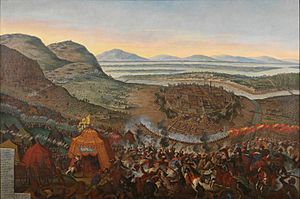
For the rest of his life, the ailing king hesitated between a pro-Habsburg and pro-French policy. His son Jakub Ludwik Sobieski married Hedwig of Neuburg, sister of the Empress. Queen Marie Casimire, promoting an alliance with France, signed a treaty with Louis XIV in 1692. But she could not persuade her husband, who felt bound by Holy League loyalties, to do the same.
After Sobieski's death, King Augustus II the Strong attempted another anti-Ottoman campaign. Only the Battle of Podhajce (1698) was fought during this time. The final Treaty of Karlowitz in 1699 ended the Holy League's wars with the Ottoman Empire. The Commonwealth recovered Podolia with Kamieniec Podolski and the Bratslav region. The Austrian Habsburg Monarchy, expanded by Hungary and Transylvania, became the leading Central European power.
After 1700, there were no Ukrainian nobles left in Polish Ukraine (the few survivors fled to the left bank of the Dnieper River). The right-bank Cossack Hetmanate no longer existed. During the 18th century, thousands of Polish noble families and hundreds of thousands of Polish peasants resettled the devastated and depopulated Ukrainian lands. The left-bank Hetmanate fought under Ivan Mazepa, but was brutally suppressed by the Russians and eventually destroyed.
The wars fought by the Commonwealth in the late 17th century mostly protected its eastern lands, where the magnates' large estates were located. Broader foreign policy needs were ignored. The state became even more disorganized, and the military efforts and destruction further damaged the economy.
Magnate Rule and Government Decline
The reigns of John II Casimir Vasa, Michael Korybut Wiśniowiecki, and John III Sobieski saw the government's power weaken further. This affected both royal control and the ability of central and local assemblies to function. As ordinary nobles lost wealth, the struggle for power and the weak attempts to reform the system happened within the changing alliances of powerful magnates and royal courts. From the time of John Casimir and his wife Marie Louise, who cared about the Commonwealth but were obsessed with royal succession, the Polish-Lithuanian state was informally divided. It became a collection of regions controlled by powerful feudal lords, who mostly pursued their own family interests.
Janusz Radziwiłł, the most powerful magnate in Lithuania, is credited with the first use of the liberum veto. This allowed one noble to stop the debates of the sejm in 1652. This widely abused practice eventually paralyzed most important lawmaking. Foreign powers used it through their noble agents to prevent internal reforms in the Commonwealth.
John Casimir's poor relations with the magnates led to his initial isolation from the Commonwealth's nobility and army in 1655 during the Swedish Deluge. In 1658, the King, supported by more patriotic nobles, proposed reforms. These included introducing majority voting rules in parliament. The Senate supported the proposal in 1658. The Sejm considered it in 1659 and set up a committee for new procedures. But the reforms soon failed due to disagreements over the vivente rege (electing a successor while the king was alive) and royal succession issues. Although John Casimir warned in 1661 that Russia, Brandenburg, and Austria would divide the Commonwealth if unsettled successions caused long periods without a king, by then the reform program had been defeated, and the army remained unpaid.
Hetman Jerzy Sebastian Lubomirski was the main figure in the opposition that defeated the royal couple's plans and reform attempts. Inspired by him, groups of unpaid soldiers (confederations) were formed in 1661 in Poland and Lithuania. These army confederations lasted for two years. They forced parliament to pay large sums of money, devastated estates, and ended what was left of the reform processes.
Marie Louise tried to force Lubomirski to leave the country. In 1664, he was accused of high treason. The sejm court sentenced him to banishment, property confiscation, disgrace, and removal from state offices. Lubomirski sought protection from the Holy Roman Emperor in Silesia. There, he gathered an army and tried to form an international coalition against the Polish King.
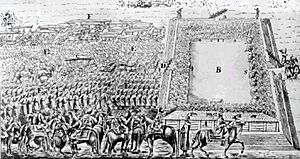
In 1665, Lubomirski entered the Commonwealth in an open rebellion known as Lubomirski's Rokosz. The main military clash happened in July 1666 near Inowrocław (Battle of Mątwy). Rebel forces killed thousands of the King's best troops. The victory did not bring great advantage to Lubomirski, who left the country again and soon died. But John Casimir was forced to formally abandon his and the Queen's attempts to elect a successor while he was alive. After the difficult and broken sejm of 1668, the King gave up his throne. He rejected many appeals to reconsider. He still tried to influence his succession, apologized for his mistakes (his reign was clearly negative), and again predicted the ultimate end of the Polish-Lithuanian Commonwealth.
With the system falling apart, especially the central and local parliamentary assemblies, confederations became important. They served as a necessary, though temporary, way of governing. Confederations were usually tightly knit groups of magnates. Members were sometimes pressured to join, but they swore oaths and were often deeply committed. Decisions were usually made by majority vote. All nobles could join, and some city dwellers participated. A confederation was led by a marshal and a council. They typically opposed a monarch or aimed to defend the country from foreign oppression.
During the election of 1669, the gathered nobles unexpectedly showed their power and acted against the leading magnate parties. After the assembly excluded all candidates who had broken legal rules, the rowdy crowd chose the incompetent Michał Korybut Wiśniowiecki. Wiśniowiecki, advised by the Vice-Chancellor, Bishop Andrzej Olszowski, married Eleanor of Austria, who was well-regarded as Queen of Poland.
The resulting closer relationship with the Austrian Habsburg state drew the Commonwealth into its alliances and conflicts with the Ottoman Empire.
Unhappy with growing Austrian influence, the pro-French group, led by Primate Mikołaj Prażmowski and Hetman Jan Sobieski, actively worked to undermine King Michał's rule. The liberum veto became even more deeply rooted when the sejm of 1669 was broken before its term ended. In 1672, as the Commonwealth faced an imminent Ottoman invasion, Prażmowski demanded the King's abdication. Michał responded by calling up the nobles' militia, which turned into the Confederation of Gołąb. This was supposedly for defense, but actually to protect the monarch's faction.
Humiliated by the Treaty of Buchach, the Commonwealth also faced a civil war. Sobieski, dismissed from his office by the Gołąb Confederation, formed a competing Confederation of Szczebrzeszyn. After fruitless arguments and the death of the pro-French party's royal candidate, urged by wartime needs, the two confederations eventually reconciled in 1673. This agreement made a common sejm possible, which could then implement necessary financial and military measures.
After Michał Wiśniowiecki's death, the election of 1674 elevated John Sobieski. Because of his recent military successes against the Ottomans, he surpassed other early favorites, including Duke Charles of Lorraine. Sobieski was an educated and well-traveled man with many interests. He was the son of Jakub Sobieski, an accomplished parliamentarian and diplomat. A great military leader, John III Sobieski became fascinated by the idea of establishing a Polish ruling dynasty. Like his predecessors, he allowed the succession issue to consume his attention in vain, at the expense of urgent state matters.
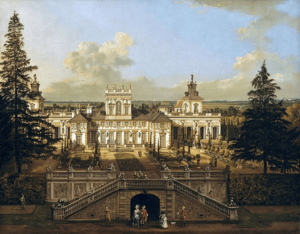
John III initially planned to achieve his goals, including conquering the Duchy of Prussia, ensuring succession for his descendants, and parliamentary reform, through an alliance with France. Facing strong opposition from the pro-Austrian magnate group, after 1678, the King abandoned his pro-French policies and collaborators. As a result, Sobieski lacked significant domestic support for his projects. From 1686, he also had to contend with Austria, Brandenburg, and Sweden, who agreed to work together to prevent changes in the Polish free election system (Russia and Austria had a similar understanding already in 1675).
During the sejm of 1688/1689, the King's supporters demanded decisive action against the increasingly bold domestic opposition. But John III was growing weak and refrained from forcefully acting against his enemies and pursuing his ambitions.
The 1691 marriage of Jakub Ludwik Sobieski, the King's eldest son, with Hedwig of Neuburg, slightly improved relations with Vienna.
The last years of the ailing king's reign saw disorder, lawlessness, internal fighting, and anarchy take over the Commonwealth. The monarch could not even control the feud between his wife Marie Casimire and their son Jakub. John III's death in 1696 began the longest, most contentious, and most corrupt period without a king in the country's history.
Commonwealth–Saxony Union
Early Wettin Rule and the Great Northern War

The situation in the Commonwealth changed somewhat after the 1697 election. Augustus II the Strong of the House of Wettin, ruler of wealthy Electorate of Saxony, unexpectedly became king. He spent large sums, got foreign support, and converted to Catholicism to ensure his election. But the vote was not a clear victory. The early favorite, François Louis, Prince of Conti, had many supporters and was proclaimed king-elect by the Primate. However, Augustus and his followers acted more quickly and decisively than the French prince. The prince's late arrival in Gdańsk, where he was blocked from landing, was not enough to prevent the Saxon from taking the throne. This result was confirmed by the "pacification sejm" in 1699, after initial unrest.
The personal union of the Commonwealth and Saxony lasted over half a century. But it joined two very different political and economic states. Both resented Augustus's persistent attempts to integrate them. This naturally limited the ruler's "absolute" tendencies in both states and his pursuit of Wettin family dominance. The ambitious and capable Augustus, who wanted to follow Louis XIV without considering his own limitations, weakened both Poland and Saxony with his risky ventures.
Augustus II stationed the powerful Saxon army in the Commonwealth. He used various external pressures to change its political system. This only alienated the Polish nobility and further demoralized society. People were left watching the corrupt, but unsuccessful, establishment. The Commonwealth military lacked talented commanders and lost its will to fight. Even though it could have up to 50,000 men during the Northern War (plus the Saxon army of 30,000), it was ineffective. After 1717, the radically reduced Polish army became a neglected remnant of its former self. Commonwealth diplomacy also faded into obscurity, despite Augustus II maintaining an extensive European diplomatic service, mostly staffed by Saxons. The Commonwealth became a passive participant in European politics, unlike the active Saxon court.
At the start of his reign, Augustus II reached an understanding with Frederick III, Elector of Brandenburg. This allowed the Hohenzollern ruler to take over Elbing in 1698. The strong negative reaction in the Commonwealth provided another chance to attack the former Prussian vassal, which might have been Augustus's goal. But the matter was resolved through negotiations and Frederick's withdrawal from the city in 1700, only to be followed by partial reoccupation of the area in 1703.
A treaty involving Saxony, Russia, and Denmark was signed in 1699. Its goal was to recover territories previously taken by Sweden. The Danes were worried by Swedish expansion into Holstein. Peace with the Ottoman Empire allowed Peter I of Russia to focus on the north. Augustus II represented the Polish claim to Livonia, where Johann Patkul, a Livonian noble, had requested his protection.
Hostilities began in early 1700. The Danes attacked Holstein, and Augustus tried to take over Riga by surprise. But the Swedish army was ready. Under the exceptional command of Charles XII, who guaranteed Holstein's independence along with England and the Netherlands, Sweden soon forced Denmark to accept peace. Charles then routed Peter I's larger force at the Battle of Narva. Augustus II, unable to take Riga even after a long siege, wanted to withdraw from the war. However, for Sweden, the union of Saxony and the Commonwealth seemed a strategic and economic threat. Charles demanded that Augustus give up the Polish throne as a condition for peace. The Swedish monarch expected considerable support within the Commonwealth. In Lithuania, the powerful and abusive Sapieha magnate group was defeated in a civil war (Battle of Valkininkai in November 1700). These oligarchs appealed to Charles for protection and the removal of Augustus.
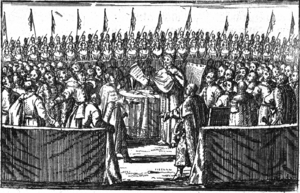
Charles defeated the Saxon army at a battle near Riga in 1701. He took over Courland and entered the Commonwealth, which was not officially part of the war at that time. The Swedes took Warsaw and moved towards Kraków. Kraków also fell as Saxon and Polish forces were beaten at Kliszów in July 1702. Further Saxon defeats happened the following year at Pułtusk and Toruń. This split the Commonwealth nobility and increased the anti-Saxon opposition led by Cardinal Radziejowski. A confederation in Warsaw, mainly based on Greater Poland nobility, was called. Following Charles XII's wishes, it proclaimed Augustus's dethronement on February 14, 1704. On July 12, Stanisław Leszczyński, the Voivode of Poznań, was elected king. This was the first free election where the outcome was forced by a foreign ruler. The chosen Polish magnate, young and well-educated, was completely loyal to Charles. Stanisław's elevation was followed by a country-wide civil war and by the Treaty of Warsaw (1705), which aimed to make the Commonwealth subservient to Sweden. The Swedish monarch was granted permanent extensive territorial and other concessions, such as the right to station and conscript troops. He intended to use the Commonwealth's resources to fight Russia, his main enemy.
Most Polish nobles opposed the Warsaw Confederation and considered Leszczyński's election illegal. The dominant pro-Augustus party formed the Sandomierz Confederation in May 1704. Led by Stanisław Ernest Denhoff, it declared its intent to defend the King and the state's integrity, seeking Russia's protection. Accordingly, the Treaty of Narva was signed on August 30, 1704, in the recently Russian-won Narva. Its purpose was to create a common front against Sweden, giving Russia the right to fight Swedish armies on Commonwealth territory. The Commonwealth was promised the recovery of Livonia (never happened). Russia promised to help suppress the Cossack uprising of Semen Paliy in right-bank Ukraine. But the treaty opened doors for Russia's future involvement in Commonwealth affairs.
The developments on the military front did not however proceed as hoped for by the pro-Saxon majority. The common Russian-Saxon-Polish offensive had failed, as Charles forced the Russians to abandon Grodno and the Saxon-led coalition army was defeated in 1706 at the Battle of Fraustadt. As a result of his successes in the War of the Spanish Succession, Charles XII entered the Holy Roman Empire and occupied Saxony. Augustus II had to agree to humiliating terms in the Treaty of Altranstädt of 1706, in which he gave up the Polish crown.
Before the treaty was approved, Augustus still managed to defeat at Kalisz a combined Swedish and Warsaw Confederation force. This cleared most of the Commonwealth of Swedish occupiers, until Charles entered through Silesia again. The Sandomierz Confederation maintained its alliance with Peter I of Russia even during Charles's Moscow offensive, when Russian troops left Poland. Stanisław Leszczyński's forces, tasked with protecting the rear, were defeated by his and Charles's Polish enemies at the Battle of Koniecpol. Stanisław and von Krassow (commander of Swedish units left in Poland), thwarted by the Sandomierz confederates again, could not break through to join Charles, who was stuck in Ukraine. There, the Cossack hetman Ivan Mazepa largely failed to deliver on his promised support for the Swedes. The Swedish supply train approaching from Livonia was destroyed by the Russians. Thus, the actions of the Sandomierz Confederation alliance greatly contributed to Charles's ultimate failure at the Battle of Poltava in 1709.
After Poltava, von Krassow and his forces retreated to Swedish Pomerania, and Augustus II's rule was restored. Leszczyński sought refuge in Swedish-controlled Stettin. Charles XII found his in Bender, under Ottoman rule, and continued to cause unrest in the Commonwealth. The Russo-Turkish War (1710–11), instigated by Charles, ended in Peter the Great's defeat. Peter was forced to remove his forces from the Commonwealth. Augustus's expeditions into Western Pomerania in 1711–13 with the Danes and Russians only resulted in Prussia taking over Stettin.
Under these circumstances, Augustus wanted to end his participation in the war and free himself from dependence on Peter I, which was formalized in the Treaty of Thorn of 1709. But he only had partial success. Attempts at peace with Sweden, which would strengthen Augustus's hand against Peter, also failed. Charles XII kept making excessive demands, including high reparations for Leszczyński. Hostilities resumed because Charles, having returned from exile, began building an army in Stralsund, threatening Saxony and Poland. A siege of Stralsund (1711–15), undertaken jointly by forces from Saxony, Prussia, and Denmark, ended in its capture and basically concluded Saxon participation in the war. Saxony-Commonwealth ended up as the only power in the victorious coalition with no territorial gains.
The activities of Augustus II were aimed at strengthening his royal power in the Commonwealth. The nobility opposed the stationing of Saxon troops in Poland, their cost, and their threatening role internally. This led to military resistance, first attempted in 1714 and then more definitively in 1715. This action united the pro-Swedish and pro-Russian groups, and Peter I's support was secured. In the fall, the Polish army organized against the Saxons, and fighting began. Not only nobles but also peasants, oppressed by military contributions, participated on a large scale. In November, the Tarnogród Confederation, with Stanisław Ledóchowski as its marshal, was formed. Its goal was to remove the Saxons from the Commonwealth.
The spreading movement, unable to achieve its goal alone, asked Peter I to mediate. Augustus agreed, and several months of negotiations, facilitated by the Russian ambassador, followed, with fighting still happening intermittently. Eventually, Augustus asked for Russian military intervention. The confederates were defeated by the Saxons at the Battle of Kowalewo. On November 3, 1716, a treaty between the King and the Polish nobility was signed in Warsaw. The treaty was ratified by the one-day Silent Sejm on February 1, 1717, so called because no debate was allowed. The outcome was a compromise reached by the negotiating representatives of the King and the Tarnogród Confederation. But Russia's mediation and supervision marked a turning point in Polish-Russian relations.
The Treaty of Warsaw and the Silent Sejm resolved many disputed issues and led to limited state reforms. These reforms included some of what enlightened noble writers had demanded. The Poland-Saxony relationship was strictly limited to a personal union. Saxon ministers were forbidden from ruling on matters concerning the Polish-Lithuanian Commonwealth. The King could only keep 1200 personal Saxon guards and was not allowed to live in Saxony for long periods.
The Commonwealth military force was practically limited to 18,000 soldiers. But it was secured by permanent tax arrangements. The state budget, though increased, was only a fraction of Russia's or Prussia's. Chief military commanders (hetmans) had their privileges reduced. Limitations were also placed on the legal power of regional assemblies (sejmiks). These proved difficult to implement due to the continued inadequacy of the central sejm.
The setbacks suffered by Poland and Saxony during the Great Northern War reflected a new balance of power in Europe. These changes were lasting, though people at the time did not immediately realize it. Charles VI, Holy Roman Emperor and George I of Great Britain formed an alliance with Augustus II in Vienna in 1719. It aimed to check the expansion of imperial Russia, but required the Commonwealth's participation. Peter I, however, cooperated with the Commonwealth by withdrawing his forces that same year, and so the Sejm would not ratify the treaty. Augustus was still able to largely free himself from Peter's protection. But in return, he was excluded from the Treaty of Nystad negotiations, which ended the war in 1721. Russia took Livonia, and the Commonwealth no longer shared a border with Sweden. In real terms, Poland, besides Sweden, was the main victim of the war. This was due to the damage inflicted on its population, economy, independence, political function, and self-defense potential.
Later Wettin Rule and Polish Succession War
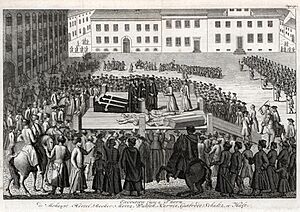
The last fifteen years of Augustus II the Strong's rule saw continued private pursuits by magnate factions. But it also brought long-awaited peace and the formation of the Commonwealth's reformist group. After 1717, Augustus II's most ambitious plans were limited. He focused on ensuring his son Friedrich August would succeed him in Poland. This was opposed both domestically and by foreign powers. Augustus sought support from Austria and had imperial political ambitions. His son Frederick Augustus converted to Catholicism and in 1719 married Maria Josepha, daughter of Emperor Joseph I.
In the Commonwealth, Augustus was frustrated by the strong opposition of Crown Hetman Adam Sieniawski and Lithuanian Hetman Ludwik Pociej. They fought the royal court, protected by Tsar Peter. They broke successive parliamentary sessions. By 1724, they forced the King to remove his trusted minister, Jacob Heinrich von Flemming, from command of a key military unit.

At this point, Augustus used the Tumult of Thorn (Toruń) to his political advantage. The tumult was a religious disturbance between Catholics and Protestants (Lutherans). A state court sentenced ten Protestants to death. The event showed a general decline in religious tolerance in the Commonwealth. It was widely condemned abroad. Only the death of Peter I prevented a foreign military intervention, which was prepared in response and included Frederick William I of Prussia. Augustus refused to help the condemned, and his standing among the unrepentant nobles improved. Subsequent efforts to normalize Poland's foreign relations ended when the Commonwealth became caught in factional fighting. The two recently formed rival magnate groups, led by the Czartoryski family and the Potocki family, were the main participants.
The party of the newly prominent Czartoryskis, known as the Familia, showed patriotic concerns, political activism, and a modern outlook. It was connected to Augustus II. Its powerful members included August Aleksander Czartoryski, Fryderyk Michał Czartoryski, and Stanisław Poniatowski, a very skilled general and diplomat, formerly serving Charles XII of Sweden.
The Potocki group tried to counter the rise of the Familia. It united most of the historically important families, including the Lithuanian clans of the Radziwiłłs, Sapiehas, and Ogińskis. Among their leaders were Józef Potocki and Teodor Andrzej Potocki, the Primate. This partisan, ruthless competition for top offices prevented the central parliament from functioning towards the end of Augustus II's rule. Stanisław Konarski, a prominent pioneering reformer, condemned the breaking of Sejm proceedings. He defended the Familia's viewpoint in his first public writing in 1732 (Conversation of a Country Gentleman with His Neighbor).
Augustus II counted on the Familia's support for his son Frederick Augustus to succeed him in Poland. But as Louis XV of France married Marie Leszczyńska, the chances of her father, the former short-term king Stanisław Leszczyński, kept increasing. He eventually gained the support of both magnate groups and much of the nobility. However, the powers surrounding the Commonwealth opposed both candidates. To control the situation in their weak Polish neighbor, they signed several agreements. Starting in 1720 in Potsdam between Russia and Prussia, these culminated in the Treaty of the Three Black Eagles of 1732. This treaty also involved Austria and named Infante Manuel, Count of Ourém of Portugal as the future king of Poland. Augustus II's last-minute desperate schemes were interrupted by his death on February 1, 1733.
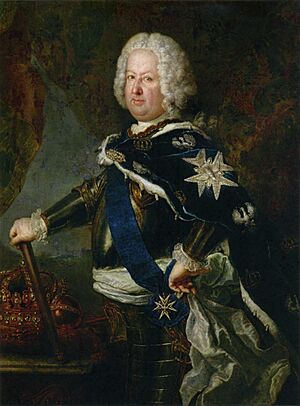
A large majority of Polish nobles, in a rare show of unity, elected Leszczyński on September 12, 1733. However, the former king lacked strong support even from France and had to sneak into Warsaw in disguise.
Meanwhile, the Saxon court reached an understanding with St. Petersburg and Vienna. Through concessions, including giving up Courland for Ernst Johann von Biron, a favorite of Tsaritsa Anna of Russia, they secured support in the secret Löwenwolde Treaty. Willing Polish nobles were found, Russian soldiers were brought in, and the Wettin was "elected" as Augustus III on October 5. The crown of the Commonwealth, again in dispute, would be decided by force of arms.
Frederick Augustus's army entered the Commonwealth and took Kraków, where he was crowned in January 1734. Stanisław Leszczyński went to Gdańsk, where he waited in vain for serious help from France. The city itself supported him. Surrounded by Russian and Saxon forces, it put up a brave defense for four months. But when the attempted rescue by the Polish army was thwarted by the Russians, Gdańsk had to surrender on May 29, 1734.
Leszczyński's supporters captured there were forced to recognize Augustus. The King himself escaped and found refuge in Prussia under the protection of Frederick William. From Königsberg, Stanisław issued a manifesto in November 1734. In response, the Dzików Confederation was set up near Tarnobrzeg, under Adam Tarło as its marshal. The confederates organized armed resistance, dedicated to defending the Commonwealth's integrity and independence. But the forces of Russia and Saxony easily defeated their units.
France, victorious over Austria in the West, lost its (never very strong) interest in supporting Stanisław Leszczyński. It signed an armistice in Vienna in 1735, which became a peace treaty there in 1738. Leszczyński had to give up the Polish crown and was compensated with the Duchy of Lorraine as his lifelong possession.

In the Commonwealth, the situation stabilized with the Pacification Sejm of 1736. It finally assigned top state offices to Józef Potocki (the Crown Hetman) and the main electors of Augustus. Foreign forces left the Commonwealth, but its sovereignty remained badly compromised. The Polish nobility had in reality lost its most cherished privilege: the free election of the country's monarchs.
Augustus III's declining health eventually led him to give up and transfer political activity to his powerful courtiers. These included Minister Heinrich von Brühl and Marshal Jerzy Mniszech. After 1754, Augustus's court supported the reform efforts of the Familia, which was still involved in fighting between magnate parties. Saxon defeats in the Seven Years' War that followed caused complete political stagnation for the Dresden court and its Polish supporters.
The internal political struggle was influenced by early Enlightenment ideas. There was growing awareness of the Polish-Lithuanian state's poor condition. The need for reforms, including urgent social issues like economic and political empowerment for city dwellers and personal freedom for peasants, was addressed in many writings. Stanisław Konarski began educational reform. Stanisław Poniatowski's publication (Letter of a Country Gentleman to a Certain Friend) explained the Czartoryski party's comprehensive reform program. This included promoting mercantilism and economic development, before the sejm of 1744. Antoni Potocki of the opposing group also called for fundamental internal reforms.
The magnate groups used foreign help. The Potocki group was supported by Prussia under Frederick II. The Familia of the Czartoryskis saw imperial Russia as the future ultimate decider of the Commonwealth's fate. Amidst domestic arguments and foreign interference, essential treasury and military reforms never happened. This was despite several clear opportunities, most notably at the sejm of 1744. From the 1750s and for the rest of Augustus III's reign, the Commonwealth descended into anarchy, corrupt private pursuits, and unrestrained violation by foreign forces.
Significant changes were happening among the powers surrounding the Commonwealth. The Hohenzollern rulers, now sovereign in the former Ducal Prussia, consolidated their control of the Baltic coast areas west of the Commonwealth's Royal Prussia. They sought to annex parts of Polish Pomerania, including a "Via Regia" connection between East Prussia and the western portions of the Kingdom of Prussia. While Russia prevented these plans for a time, Frederick II focused on taking over Silesia, a region that had been under Bohemian and Austrian control for centuries.

Taking advantage of the Habsburg dynastic crisis after Maria Theresa took the throne, he invaded Silesia in 1740. The Austrians tried to recover the conquered area but were defeated at the Battle of Mollwitz. They then became busy with the War of the Austrian Succession. The Treaty of Breslau and Treaty of Berlin (1742) gave Prussia most of Silesian territory. Prussia became Poland's only western neighbor. Prussian advances threatened the (until then strong) ethnically Polish, often Protestant, Silesian populations with increased Germanization pressures. The Habsburg state had a much better record of tolerating minority cultures than the Hohenzollerns in East Prussia.
The first Silesian war was followed by the second (1744–45), ended by the Treaty of Dresden, and the third (1756–63). Saxony participated in all three, hoping for a land connection with the Commonwealth. The Saxon army, allied with Prussia, was destroyed during Frederick's Olomouc campaign in 1742. For the second (when Saxony was invaded by Prussia) and third wars, Saxony switched to supporting the Habsburgs. It unsuccessfully tried to involve Poland during the sejm of 1744. The Treaty of Warsaw (1745) failed to significantly strengthen Augustus's position in the Commonwealth.
The Seven Years' War led to the demise of the Saxon army. Attacked by the Prussians, it surrendered at Pirna in 1756. Saxony found itself under Prussian occupation. Despite far-reaching Prussian and Russian expansionist plans, the Treaty of Hubertusburg preserved the territorial situation in the area in 1763. While Saxon defeats prevented the Wettin personal union with the Commonwealth from continuing beyond Augustus III, the disarmed and defenseless Commonwealth was ripe for more definite territorial encroachments by neighboring powers.
The union with Saxony had beneficial economic and cultural consequences for both societies. Saxons were important in spreading early Enlightenment ideas in the Commonwealth. Józef Aleksander Jabłonowski, who founded a scientific society in Leipzig, was one of the Poles active in Saxony. The personal union period was remembered as a time of positive Polish-German interactions.
Sarmatism Era Culture
Sarmatism and Counter-Reformation
In culture, the period from 1648–1764 was dominated by the Baroque style. The final decades also saw the early Enlightenment. The mid-18th century was a transition period between the two. As part of the diverse European Baroque, the Commonwealth held a unique, original position. Western European elements blended with Oriental influences and native styles. All combined fully within the broader regional Sarmatism culture.
Close cultural contacts with Italy, which began during the Renaissance, remained strong. Many Italian artists worked in the Commonwealth, supported by royal and magnate courts. Many Polish upper nobles traveled to Italy to study, go on pilgrimages, or sightsee. Increasingly, they also traveled to France to build aristocratic contacts and learn about Western ways of life in major centers like Paris or Versailles.
In the 18th century, growing French cultural influence became dominant. This matched France's rising political importance in Europe and its flourishing arts and literature. The two queens who were French, Marie Louise and Marie Casimire, greatly contributed to cultural contacts. They also fostered increasingly common family ties between French and Polish aristocratic circles. The court of Augustus II, who admired French culture and followed Versailles patterns, strengthened this trend. By then, the French language was commonly used, but mostly within the magnate class.
German cultural patterns strongly influenced German and Protestant city dwellers. This was especially true in Royal Prussia and the Poznań area. Some of them were educated at Protestant universities in Germany. German culture became important in the 18th-century Commonwealth due to the personal union with Saxony. Less common, but also present, was the influence of other Protestant West European cultures. In earlier stages, Dutch influence was more significant than English. Jewish city dwellers in the Commonwealth were important in trade and cultural contacts. Some Jews were educated abroad at the few European universities that accepted Jewish candidates.
Eastern influences became clear and increased throughout the 17th century. The nobility of the Commonwealth preferred Tatar, Turkish, Persian, and also East Slavic artistic tastes. This was due to wars fought on the Islamic front, the spoils brought back, and the supposed Black Sea shores (Sarmatian) origins of Polish nobles. Literary and linguistic interests also moved in that direction. Tadeusz Krusiński, a Jesuit missionary, traveled widely and published in Latin, including a 1733 account of his experience in Persia.
From the early 17th century, the culture of Polish Baroque was based on Sarmatism and Counter-Reformation. During that century, these fused into one powerful current of Catholic national mission. The Polish, Lithuanian, and Ruthenian nobilities were thus reduced to one messianic "nation" of common origin. Their calling was to defend Christianity and freedom in Europe. This unique understanding of the "chosen" Polish nation was promoted by leading writers of the period, including Wacław Potocki and Wespazjan Kochowski. It remained part of the national mystique for a long time. The practical results of this supposedly civic-minded, self-elevating view were narrow-mindedness, xenophobia, stagnation, and intolerance. The Polish Catholic Church also remained nationalistic and intellectually backward until the 18th century. Only then were the reforms of the Council of Trent belatedly implemented. The huge growth of monasteries of several Catholic religious orders had little constructive influence on the nation's spiritual life or popular education. For example, witch trials and executions, though not as common as in Germany, continued until the mid-18th century.
Most Polish people were brought back to Catholicism during the first half of the 17th century. But anti-Protestant attacks continued. They often took the form of Catholic propaganda pamphlets and strict Church censorship of differing views. One clear instance of active persecution against a religious minority was the expulsion of the Polish Brethren. During the Swedish Deluge, they strongly supported King Charles Gustav. The sejm of 1658 sentenced the so-called Arians to banishment unless they converted to Catholicism. As a result, several hundred families (about five thousand people) left the Commonwealth in 1660. Others, threatened with death and property seizure, faked conversion, only to face further legal persecution. The Polish Brethren were among the most enlightened parts of society, and their expulsion greatly harmed the country's intellectual development. Other Protestant denominations remained, at least formally, protected by the rules of the 1573 Warsaw Confederation. Many Silesian Protestants entered the Commonwealth to avoid being forced back to Catholicism in the Holy Roman Empire after the Peace of Westphalia of 1648. However, further restrictions soon followed.
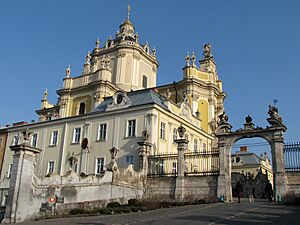
The "Arian registry," created after the sect's exodus, included various cases of religious persecution. These included atheism or apostasy (officially leaving the Church). Apostasy was banned in 1668. From 1673, only Catholics could be granted nobility or indygenat (recognition of foreign nobility status). In 1717, after the Northern War destruction, Protestants were not allowed to restore their congregations or build new ones. They were banned from holding state offices and removed from the central parliament. Discriminatory laws were all collected in the sejm statute of 1733. After this, Commonwealth Protestants no longer had meaningful political rights. Actual cases of religion-inspired violence, such as the Thorn Tumult of 1724, were rare. Considerable freedom of religious practice generally prevailed. Non-nobles faced less scrutiny, and many foreign persecuted minorities were allowed to settle in the country and keep their religion. The Orthodox Church hierarchy in the Commonwealth was forced to accept the Union in the early 18th century.
The much-reduced Protestants remained significant. They cooperated among different denominations and appealed to the Treaty of Oliva guarantees or to foreign (Prussian, English, and Dutch) protection when restrictions were imposed. The ethnically Polish and culturally active communities that remained in parts of Silesia, Pomerania, and Prussia had the Protestant city dwellers as their leading component.
Culture of Mature Baroque
The dominance of Sarmatism and Counter-Reformation, along with the weak cultural development of the Commonwealth, was closely linked to a lower level of general education compared to the previous period. What remained of the school system, damaged by wars and lack of interest, focused on religious education and promoting loyalty to noble "freedoms." The number of parish schools and secondary schools increased in the 18th century, with more serious reform starting in the 1840s. Many secondary schools were run by religious orders like the Jesuits and Piarists. In the early 18th century, illiteracy levels may have ranged from about 28% for upper nobility to 92% for petty nobility, with over 40% for middle nobility and city dwellers.
Protestant middle schools fared somewhat better, led by the well-regarded gymnasiums in Danzig and Thorn. There were accomplished Polish Protestant schools in Silesia, led by the Pietist school in Teschen and the municipal school in Breslau.
Higher education institutions remained stagnant for a long time. Interested young members of the upper nobility or wealthy city dwellers went to study in Italy or other West European countries. The Jesuit Breslau Academy was established in 1702 and attracted students from the Commonwealth. Existing native institutions in Kraków, Vilnius, Zamość, and Lwów mostly taught scholastic theology and philosophy.
Scientific achievements were generally modest. The one accomplished astronomer was Johannes Hevelius (1611–87) of Gdańsk, known for accurate sky observations with equipment he built. Adam A. Kochański and Stanisław Solski were Jesuit mathematicians and astronomers; the latter was also an engineer.
For history research, the most important work is the heraldry book The Polish Crown (1740) by Kasper Niesiecki. It provides a wealth of information on Polish noble families.
Social and political thought produced little new. Its main representatives in the 17th century were Krzysztof Opaliński, Andrzej Maksymilian Fredro, and Stanisław Herakliusz Lubomirski. They proposed limited social reform. In the early 18th century, Stanisław Antoni Szczuka and Stanisław Dunin-Karwicki proposed legislative, treasury, and military reforms.
Nowe Ateny (The New Athens), the first encyclopedia published by Benedykt Chmielowski in 1745–46, was not scientifically up-to-date. Of the popular agricultural handbooks, the most complete was by Jakub Kazimierz Haur in 1675. Merkuriusz Polski Ordynaryjny of 1661, the first printed periodical, lasted for a year (41 issues). The first permanent newspaper was Kurier Polski, published from 1729 by the Piarists and then the Jesuits.
Literature developed many new genres and themes. However, the intended meaning was often hidden within wordy and overly decorative styles. There were hardly any authors as good as Europe's best. The epic form was dominant, mainly as religious, historical, or fantasy storytelling, in both poetry and prose. The pastoral style was popular, for example, in romance, as was lyric poetry in general. Elaborate form was usually preferred. Publishing original and creative material was difficult due to strict church censorship. Many aspiring works remained only in manuscript form.
Jan Andrzej Morsztyn, a magnate active in royal court circles, represented the conceptismo style. He wrote romantic poetry and excellent translations of foreign works. Zbigniew Morsztyn was a soldier and poet connected with the Polish Brethren. He spent half his life in exile in Prussia and wrote realistic poetry about the hardships of military life. Another poet and Polish Brethren member, Wacław Potocki, converted to Catholicism. His poetry describes the life of Polish landed gentry and historical events. He wrote the epic poem The Conduct of the Khotyn War (of 1621) and was deeply troubled by social injustice and the Commonwealth's decline. The noble apologist Wespazjan Kochowski expressed no such doubts, but even he could not hide the progressive decay of his class. In an era of constant warfare, writing memoirs became a common art. Jan Chryzostom Pasek was one of Europe's leading writers in this genre.
Macaronic language, Polish mixed with Latin, was often used in writing. The mid-18th century movement to purify Polish from Latin was led by Stanisław Konarski and Franciszek Bohomolec.
Royal court theater continued under John Casimir, John III, Augustus II, and Augustus III. Foreign troupes came from Italy (Italian plays were most popular), France, and Germany. At least ten magnate-supported theaters operated during Saxon times. These included one at the Ujazdów Castle, where Stanisław Lubomirski staged his comedies, and one at Podhorce, where Hetman Wacław Rzewuski's historical plays were shown. School theaters were maintained by the Jesuits, Piarists, and Theatines. There were also religious spectacles for the public, including mystery plays, passions, and nativity scenes, usually with folk elements.
Music mostly served the Church and remained primarily under Italian influence. Pipe organs were brought from abroad and built locally; the instrument built in 1682 in Leżajsk is of very high quality. Many instrumental and vocal groups were active at various church institutions. Bartłomiej Pękiel composed polyphonic music, including a cappella masses and the first Polish cantatas. Stanisław Sylwester Szarzyński wrote instrumental music, of which only one sonata has survived. Secular (court bands) and folk music were also practiced. The mazurka folk dance developed during this period. Foreign operas and ballets were staged in Warsaw under Augustus II and Augustus III.
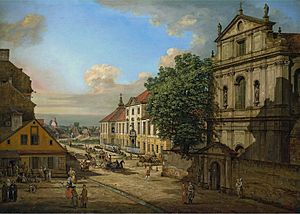
The finest artistic expression of the Baroque in Poland is its architecture. It developed under Italian, Dutch, German, and French influence, with a strong local component. New elaborate residential and religious buildings, or the rebuilding of older, war-damaged structures, were financed by magnates and the Church. St. Peter and St. Paul's Church in Vilnius or Church of St. Anthony of Padua at Czerniaków, Warsaw are examples of the Baroque's richly decorative style. Vault or dome painting, part of the overall design, added to the impression with optical illusion effects. Sculpture also primarily complemented the interior design.
The Krasiński Palace built in Warsaw in the late 17th century by Tylman van Gameren is an impressive monumental structure. Afterwards, more convenient and intimate residential forms were preferred, while still keeping much of the former grandeur. The Wilanów Palace of King John III is an early example of this trend. The Rococo style was popular under the Wettin rulers. The current Saxon Palace in Warsaw was rebuilt by Augustus II in that style. Many magnate residences, in Warsaw and across the country, where former fortifications were replaced with parks and pavilions, followed this trend.
Noble manors were built of wood, as were many country churches. Their builders were local, and interesting native styles are still seen in existing structures.
Jerzy Siemiginowski-Eleuter was a prominent painter, one of several who worked for John III. Krzysztof Lubieniecki and Teodor Lubieniecki of the Polish Brethren painted in Western Europe. Szymon Czechowicz represented religious painting in the 18th century. Of particular interest is Sarmatist portrait painting. Usually anonymous, it often faithfully shows key individual characteristics of ordinary Polish nobles and magnates, even with its artistic rules. Coffin portraits are an important type of this art.
Even with its diminished influence, the Commonwealth continued as a bridge for cultural and diplomatic contacts between the West and the East. Polish culture and language were internationally important and remained attractive in many foreign (Tatar, Russian, Wallachian, Moldavian, German) circles. This cultural appeal contributed to the Polonization in the 17th century of most Lithuanian and Ruthenian nobility in the Commonwealth. Ethnically non-Polish city dwellers were much less affected by this process, and peasants even less. So, the apparent cultural and linguistic uniformity of the country was largely an illusion. Ethnically Polish groups west of the Commonwealth (in Silesia and Pomerania) were often ignored by the Polish establishment as non-nobles. Their ties with their ethnic homeland weakened. These factors later made it difficult for Poles to find their proper place in the formation of modern European nations and states.
Early Enlightenment
Enlightenment ideas were fully developed in Western Europe, especially England and France, when they reached the Commonwealth during the last 25 years of the union with Saxony. Augustus II promoted French culture, while Stanisław Leszczyński promoted its social and philosophical thought. Protestant city dwellers of Royal Prussia were early influenced by rationalist philosophy. They and many progressive Polish Catholics followed the Saxons and accepted the moderate rationalism of Christian Wolff, finding inspiration in it.
The social changes proposed by Enlightenment thinkers depended on better and wider education. The Theatines had few colleges in the Commonwealth, but theirs were the first attempts at school reform in the 1830s. In Lunéville, Lorraine, Stanisław Leszczyński established a corps of cadets, a school for Polish and local nobility. The most crucial initiative was by Stanisław Konarski. The young Piarist taught in his order's schools, studied and taught in Rome, and upon returning via France, Germany, and Austria, dedicated himself to teaching, scientific, and public writing. In 1740, he established the Collegium Nobilium in Warsaw, a high-quality secondary school for noble youth. The school promoted civic duties through debates and school theater, for which he wrote a tragedy and where Voltaire's tragedies were shown. Despite many objections from the Jesuits and others, the trend set by the Collegium Nobilium was followed. In 1754, all Piarist colleges were reformed, and Jesuit schools soon followed. New textbooks and teacher training methods were implemented. In school theater, Konarski's work was continued by Franciszek Bohomolec, who revised outdated plays and wrote or adapted many comedies.
Bishops Andrzej Stanisław Załuski and Józef Andrzej Załuski became great supporters of science. In 1747, they opened a public library in Warsaw, known as the Załuski Library, one of Europe's largest. Józef Załuski gathered scientists and tasked them with reviving and expanding Polish scientific and cultural achievements from the Renaissance era. Foundations were laid for the development of Polish bibliography, and many publishing projects were started.
Konarski undertook to compile all of the sejm legislative records in his Volumina legum. Andrzej Stanisław Załuski extended his support to the most outstanding historian in the Commonwealth, Gottfried Lengnich of Gdańsk, future teacher of Stanisław Antoni Poniatowski. Lengnich wrote Ius publicum Regni Poloniae in 1742, an excellent description of the Polish political system, and a history of Royal Prussia. Related work was done in the first half of the 18th century by researchers in Gdańsk, Thorn, Elbing, and Königsberg. Scientists of German origin were responsible for and boosted much of the early scientific revival in the Commonwealth.
Publications and periodicals increased in number and served to educate and inform the public. The earliest ones were published in German, and many were for foreign readers, starting with Lengnich's Polnische Bibliothek in 1718–19. Lorenz Christoph Mizler of Saxony proposed economic innovations and edited and published Poland-related periodicals in German in 1753–56 (Warschauer Bibliothek, Acta Litteraria), and in Polish Nowe Wiadomości Ekonomiczne i Uczone (New information economical and learned) in 1758–61. The Polish Patriot by Teodor Bauch of Thorn and Monitor by Adam Kazimierz Czartoryski were the first "moral" periodicals, dedicated to the new ideology and ethics.
From Stanisław Leszczyński's circle came Głos wolny wolność ubezpieczający (A free voice in defense of freedom) in 1743 (dated 1733). It presented a comprehensive program of political and social reform. The publication advocated personal freedom for peasants and steps to secure their greater economic independence. Stefan Garczyński wrote The Anatomy of the Polish Commonwealth in 1750. In it, he strongly criticized the social and economic hardship of the lower classes and promoted economic policies based on mercantilism.
Of special importance were the writings of Stanisław Konarski. Beyond school reform, he fought for many years for central government reform and for moral renewal of the noble class. This included lessening burdens and improving the lives of non-nobles. In his most important work O skutecznym rad sposobie (On an effective way of councils, 1760–63), he revealed a far-reaching reform program for the Polish parliamentary system and political reorganization of the Commonwealth. This included helping the monarch with a permanent governing council.
|
See also
 In Spanish: Historia de la República de las Dos Naciones (1648-1764) para niños
In Spanish: Historia de la República de las Dos Naciones (1648-1764) para niños


